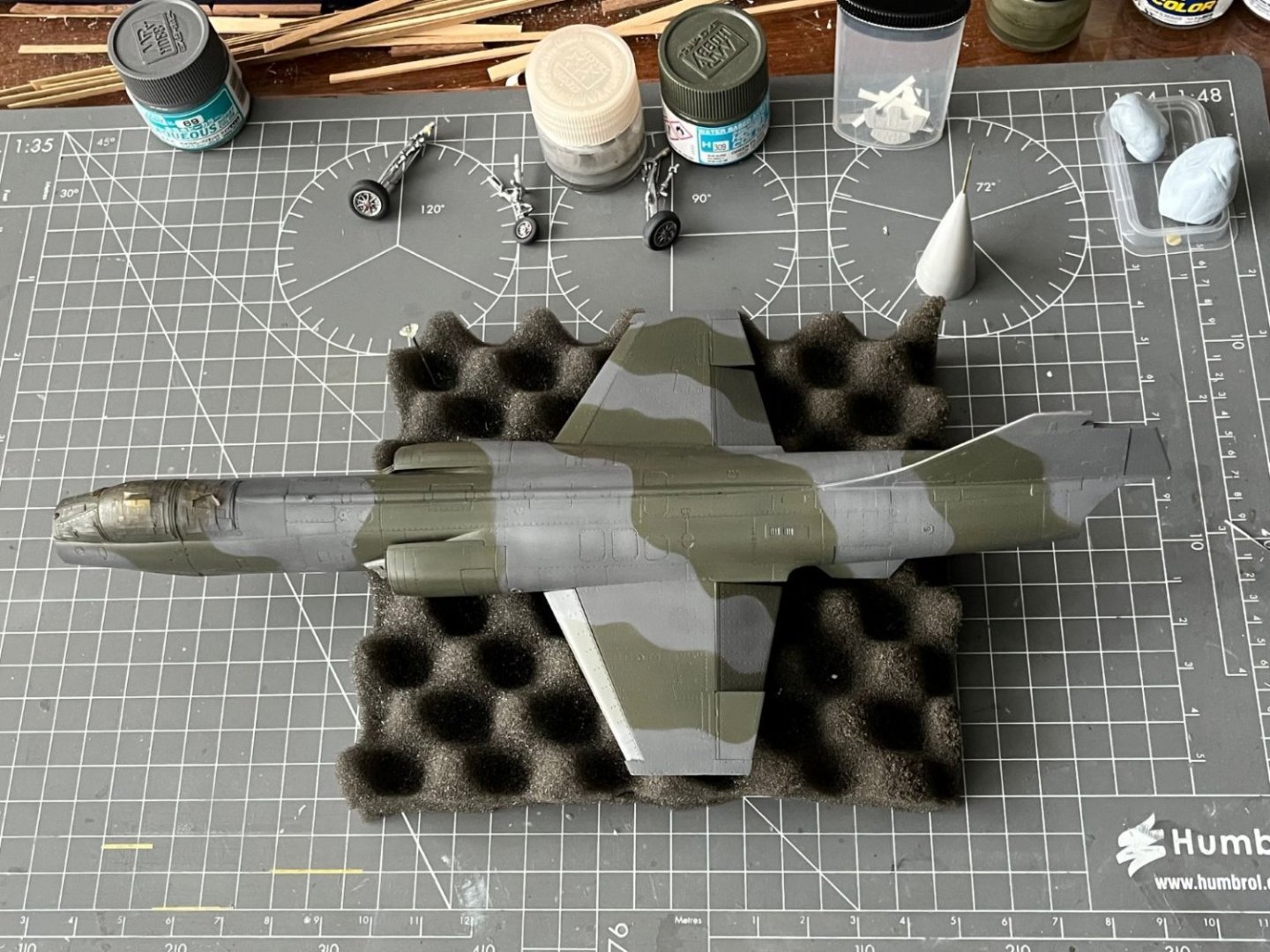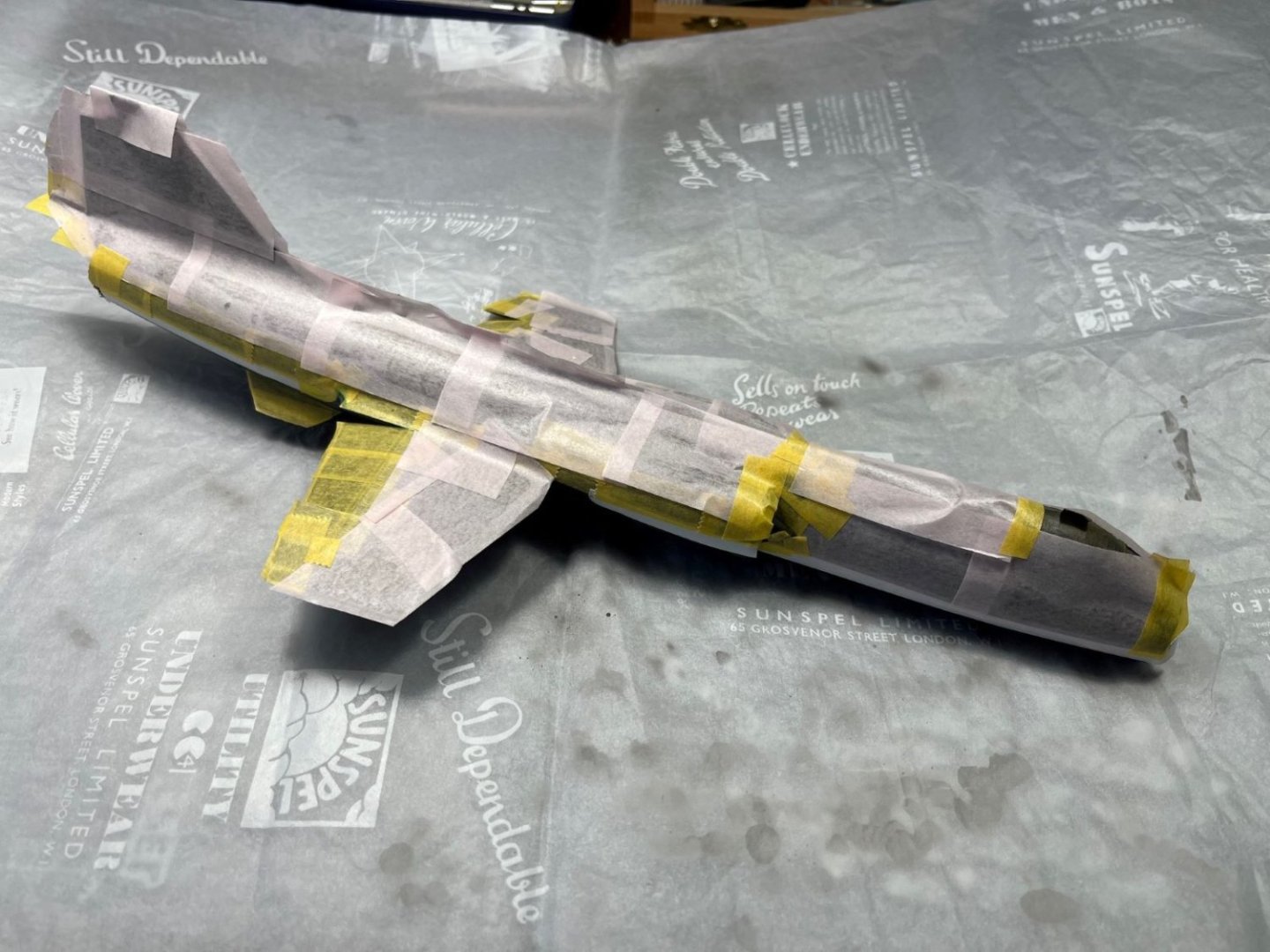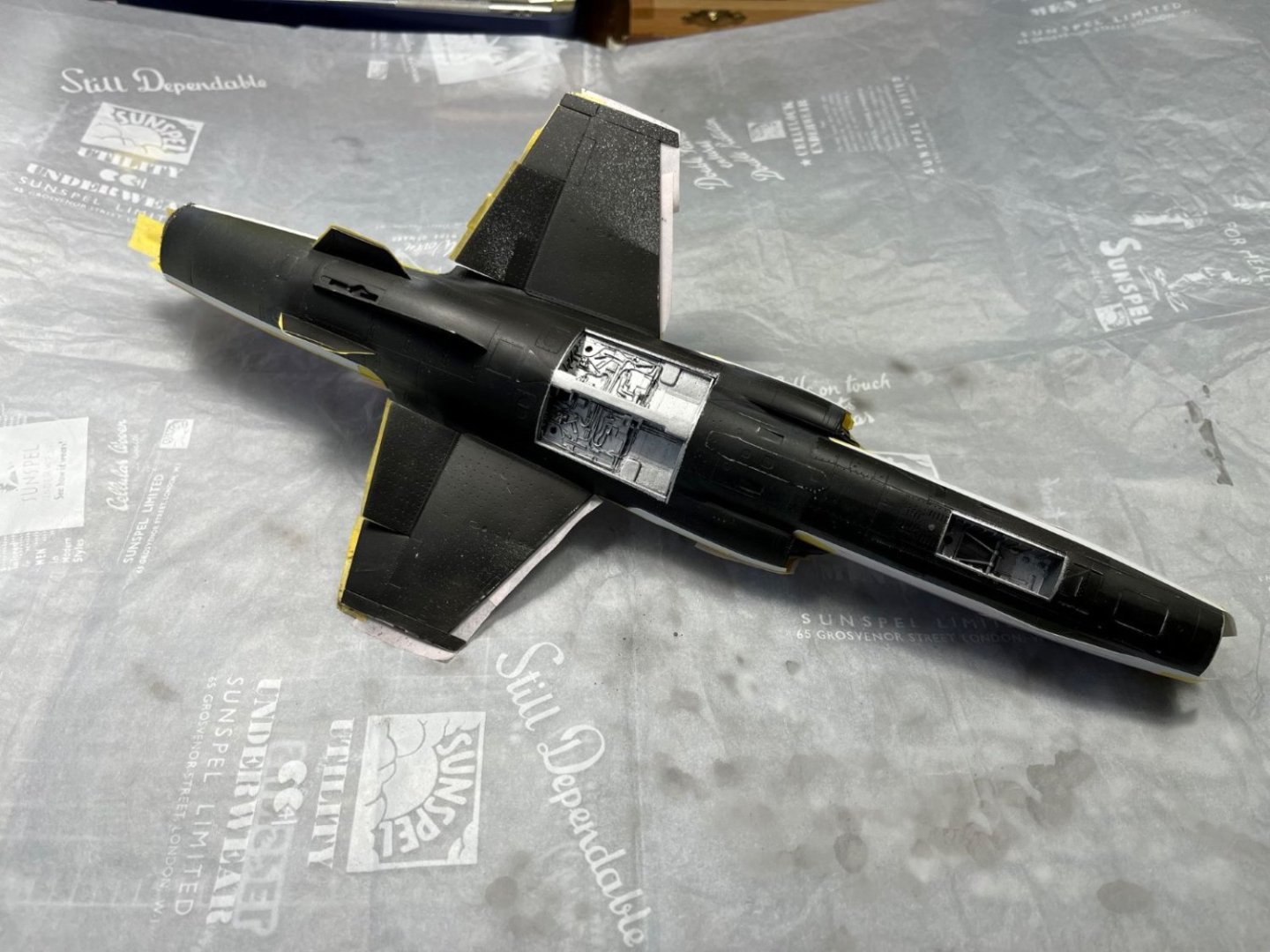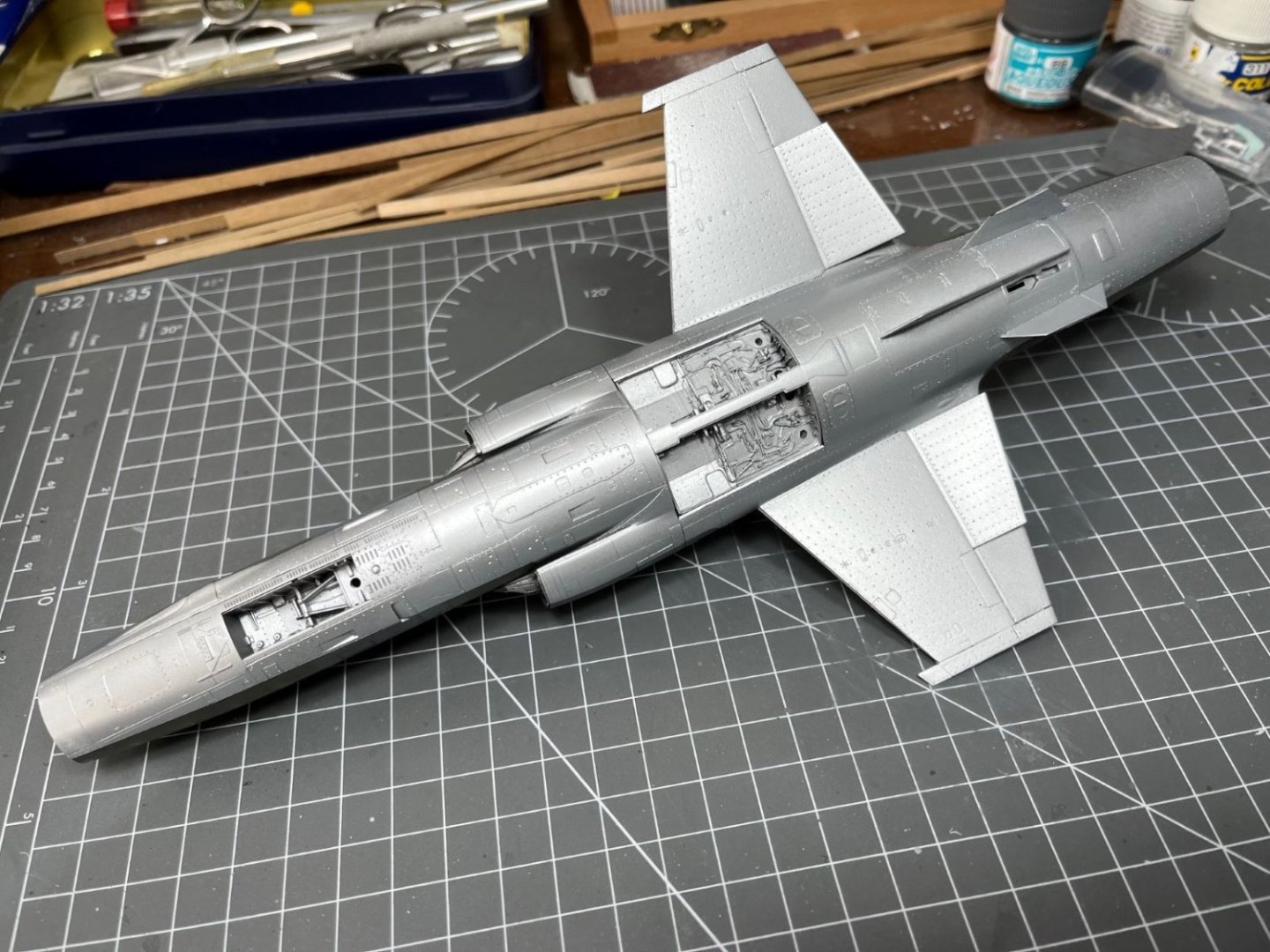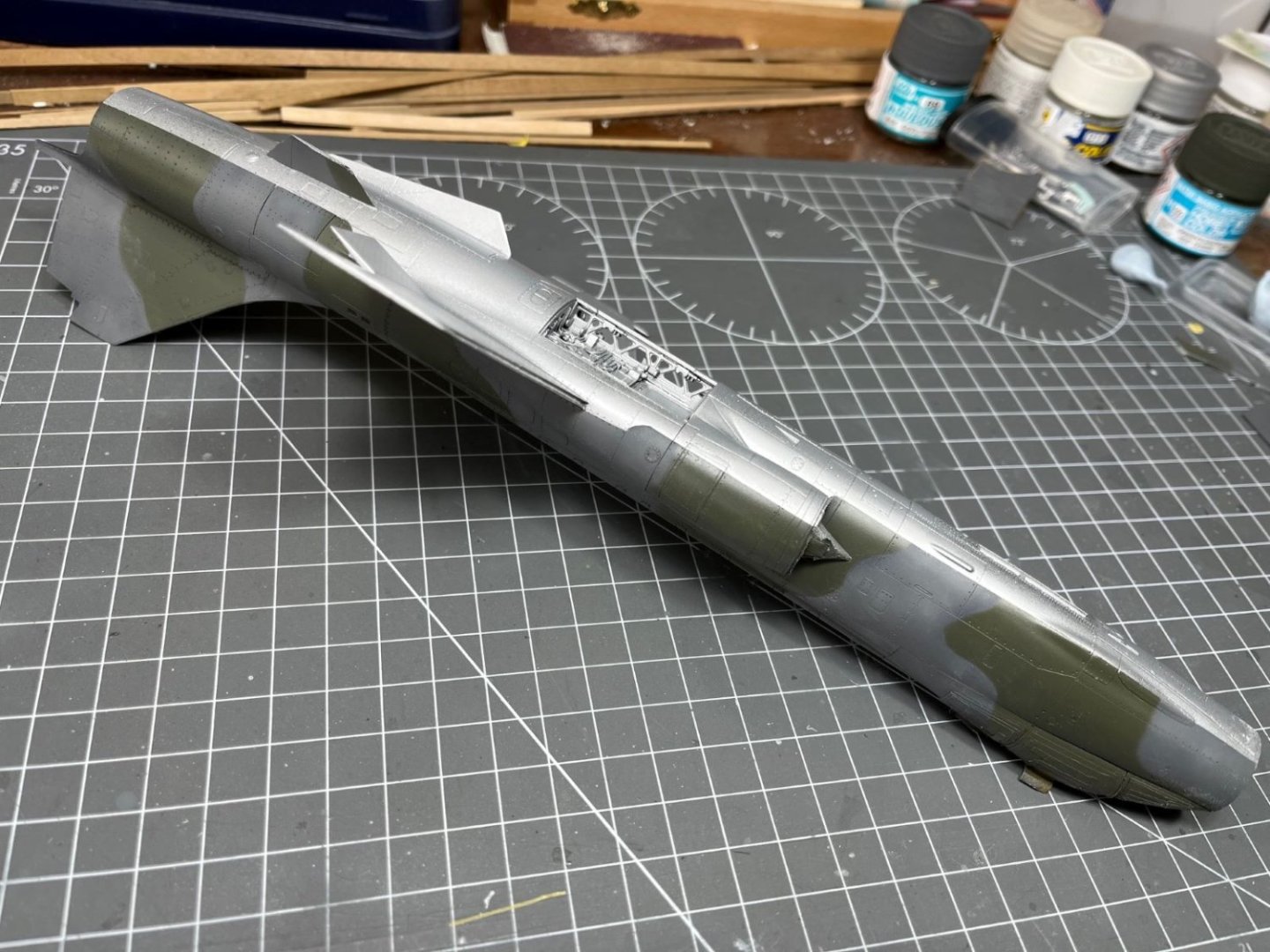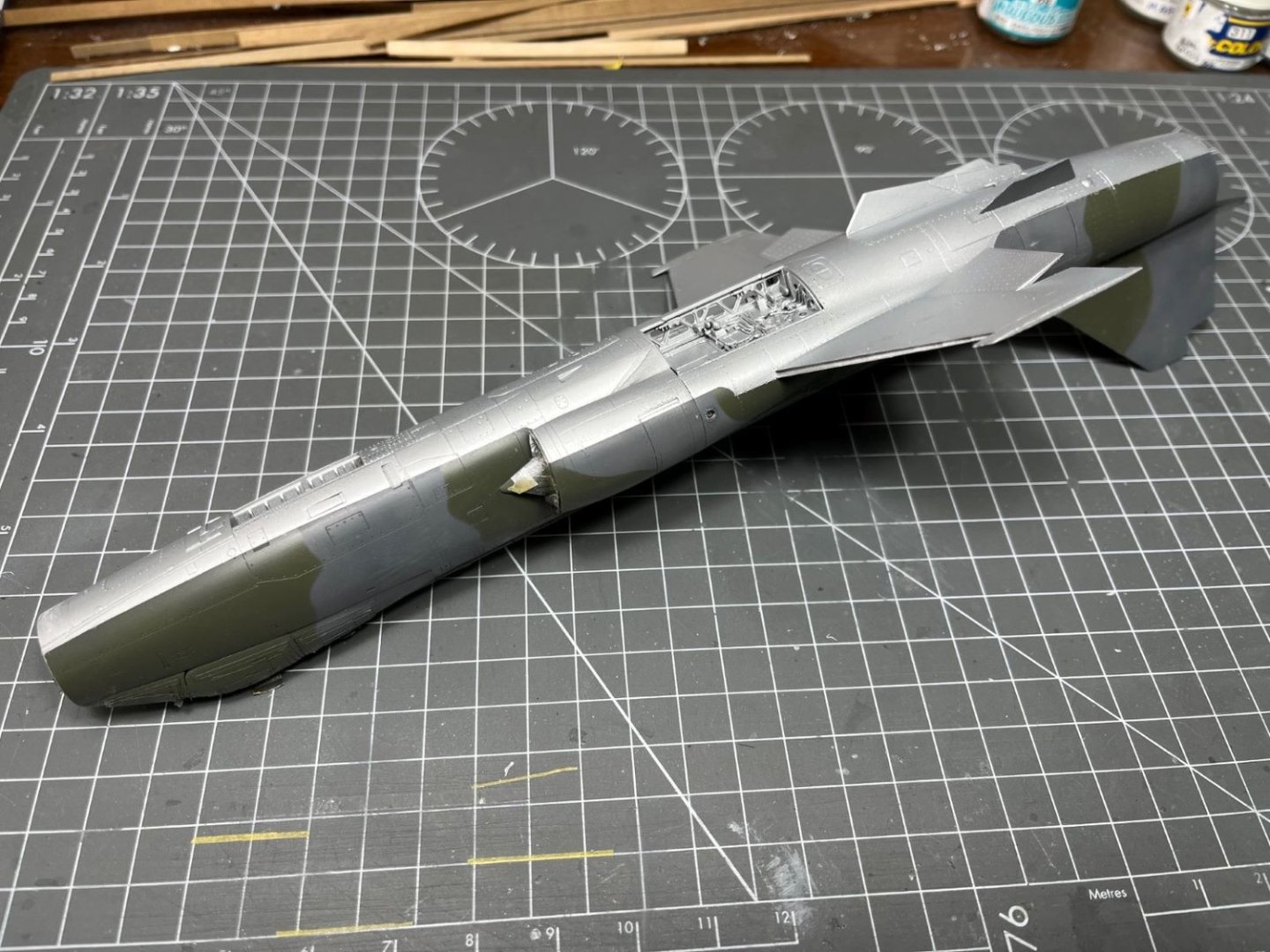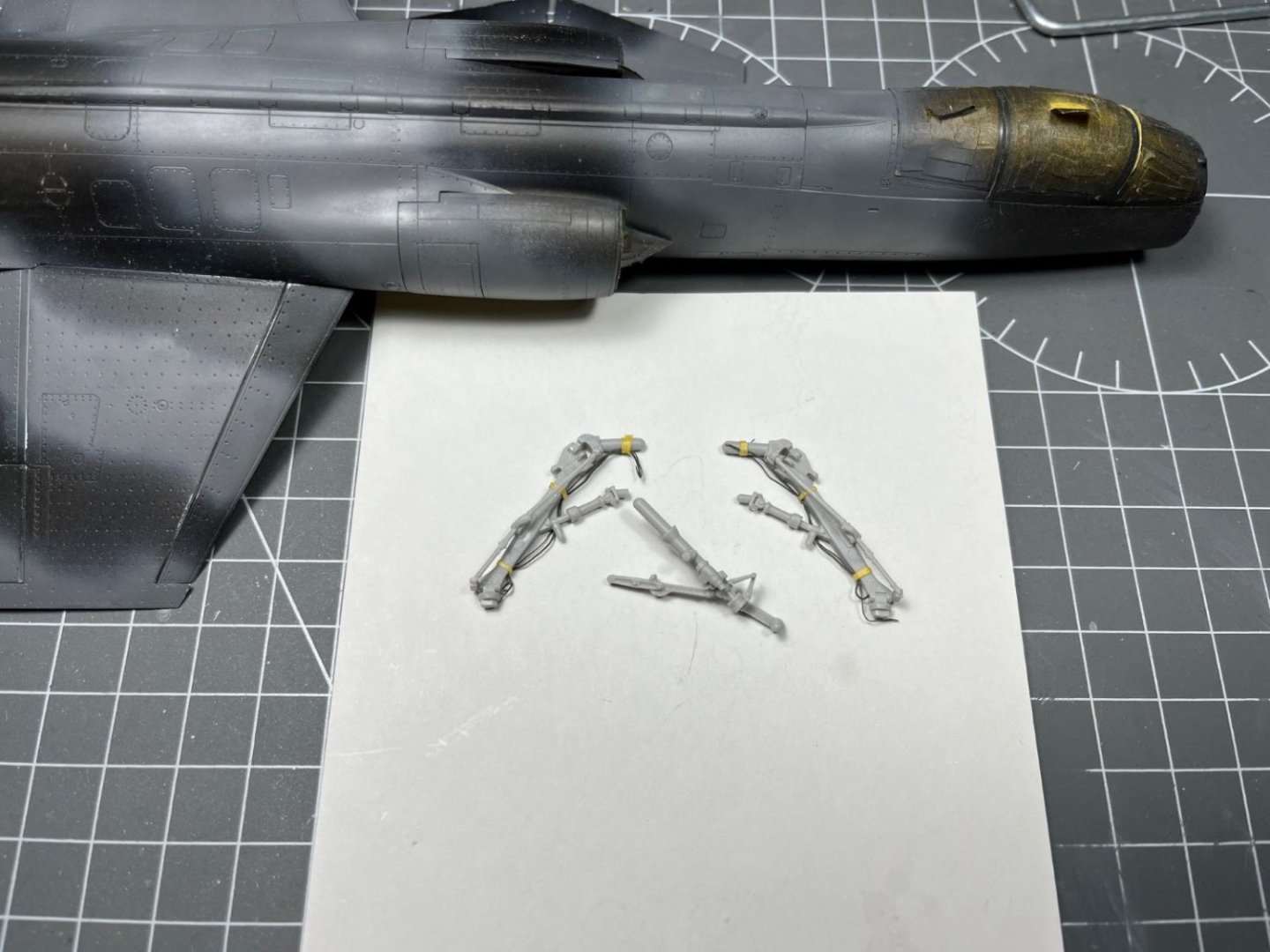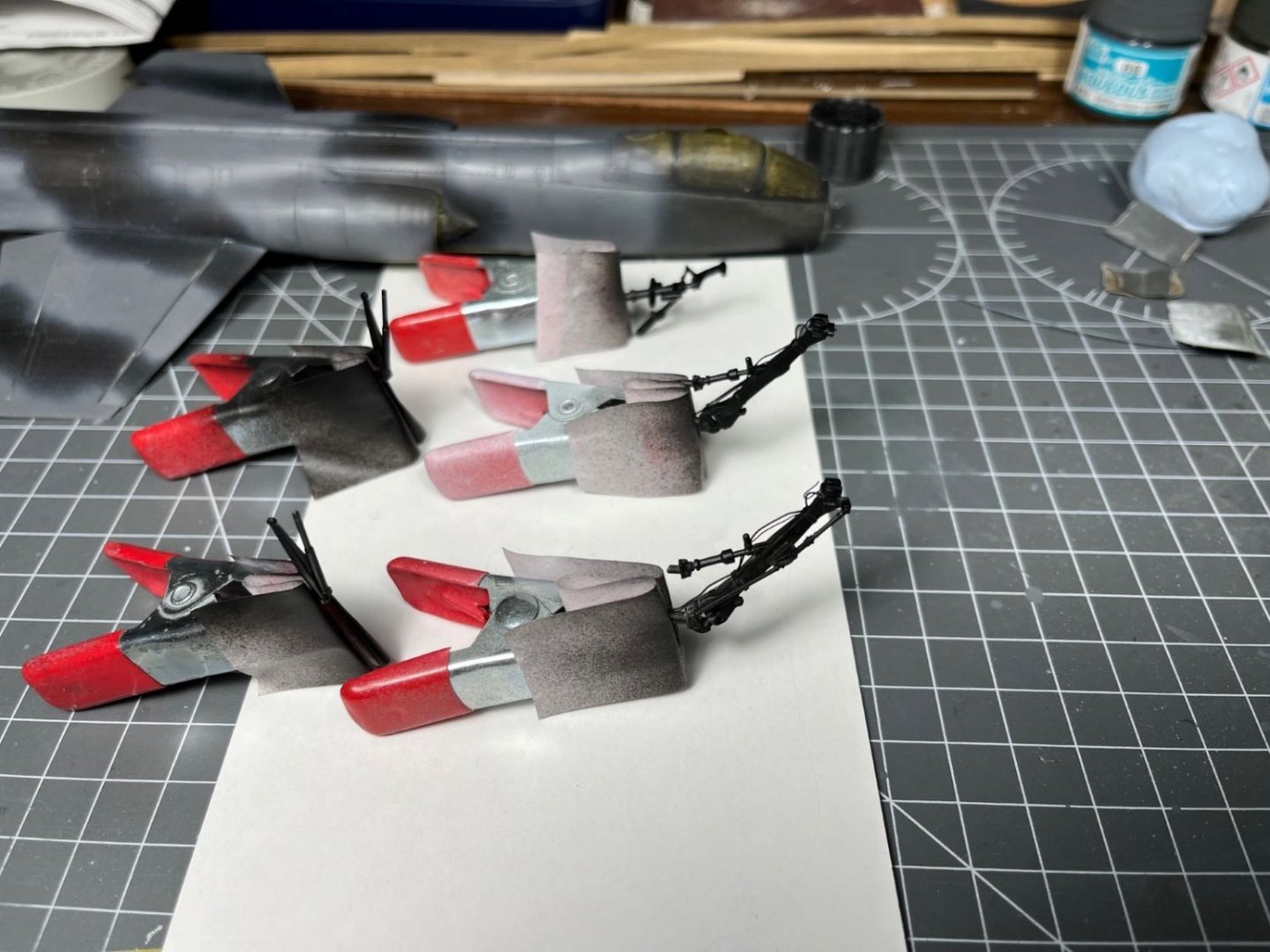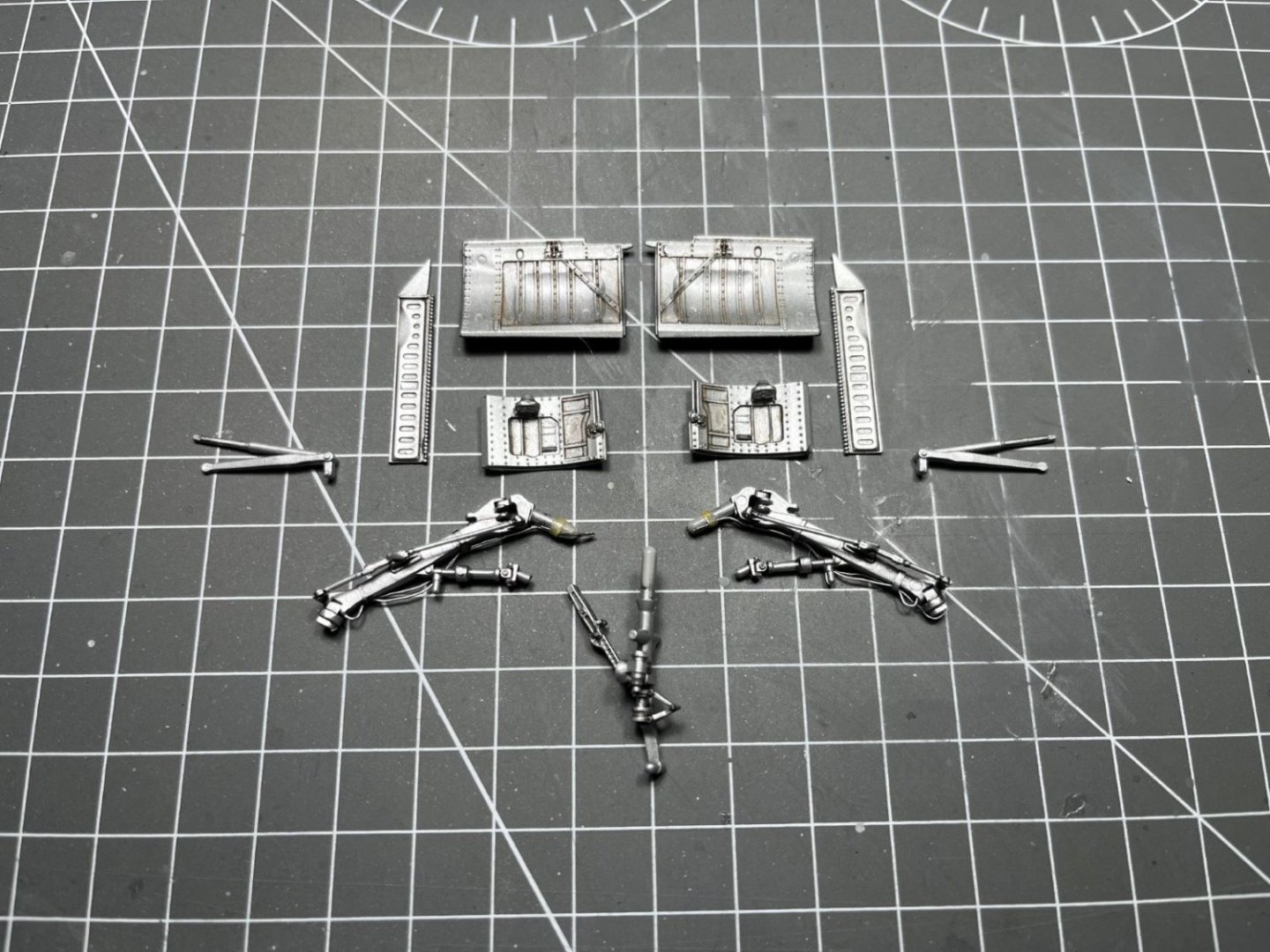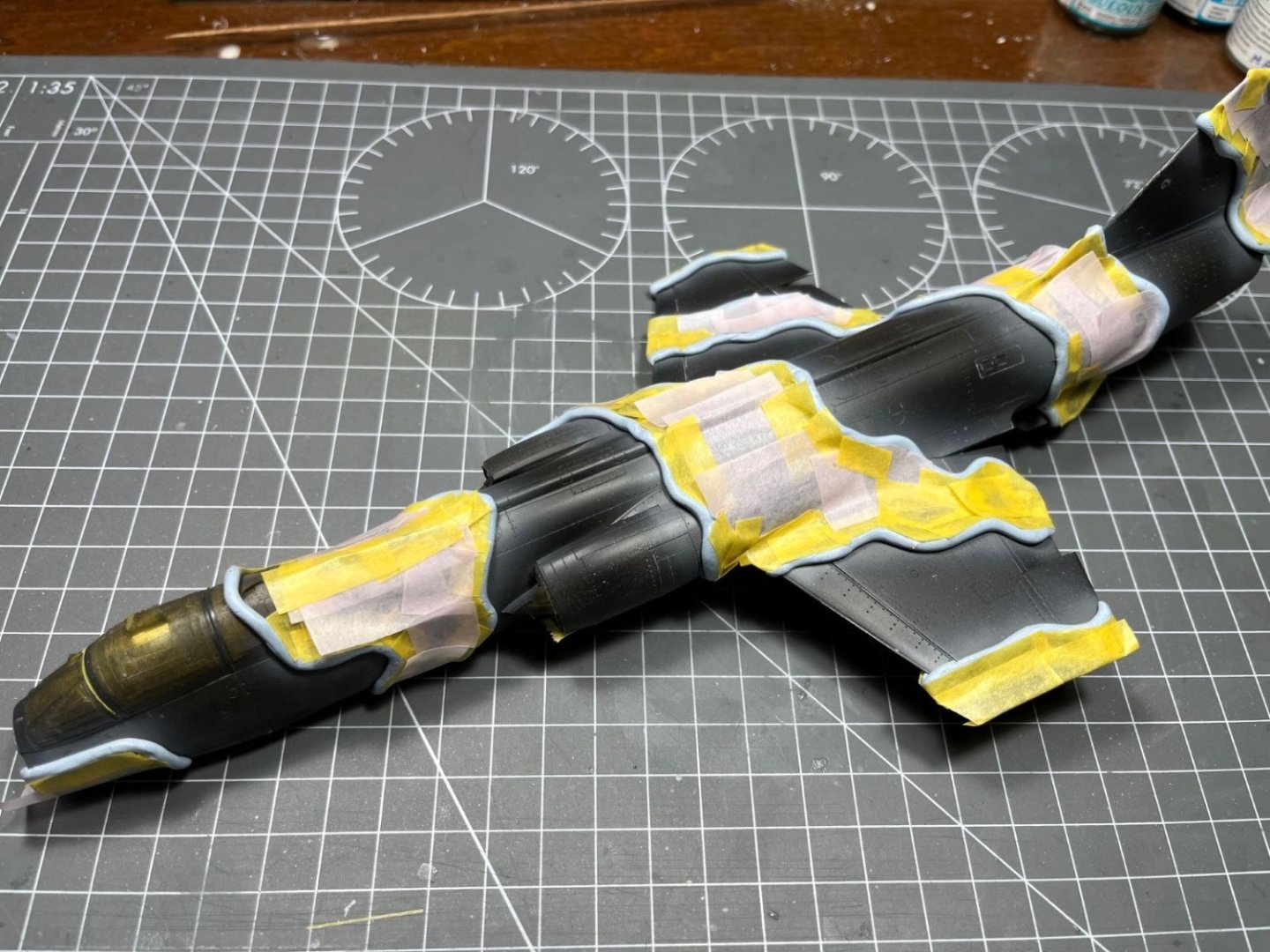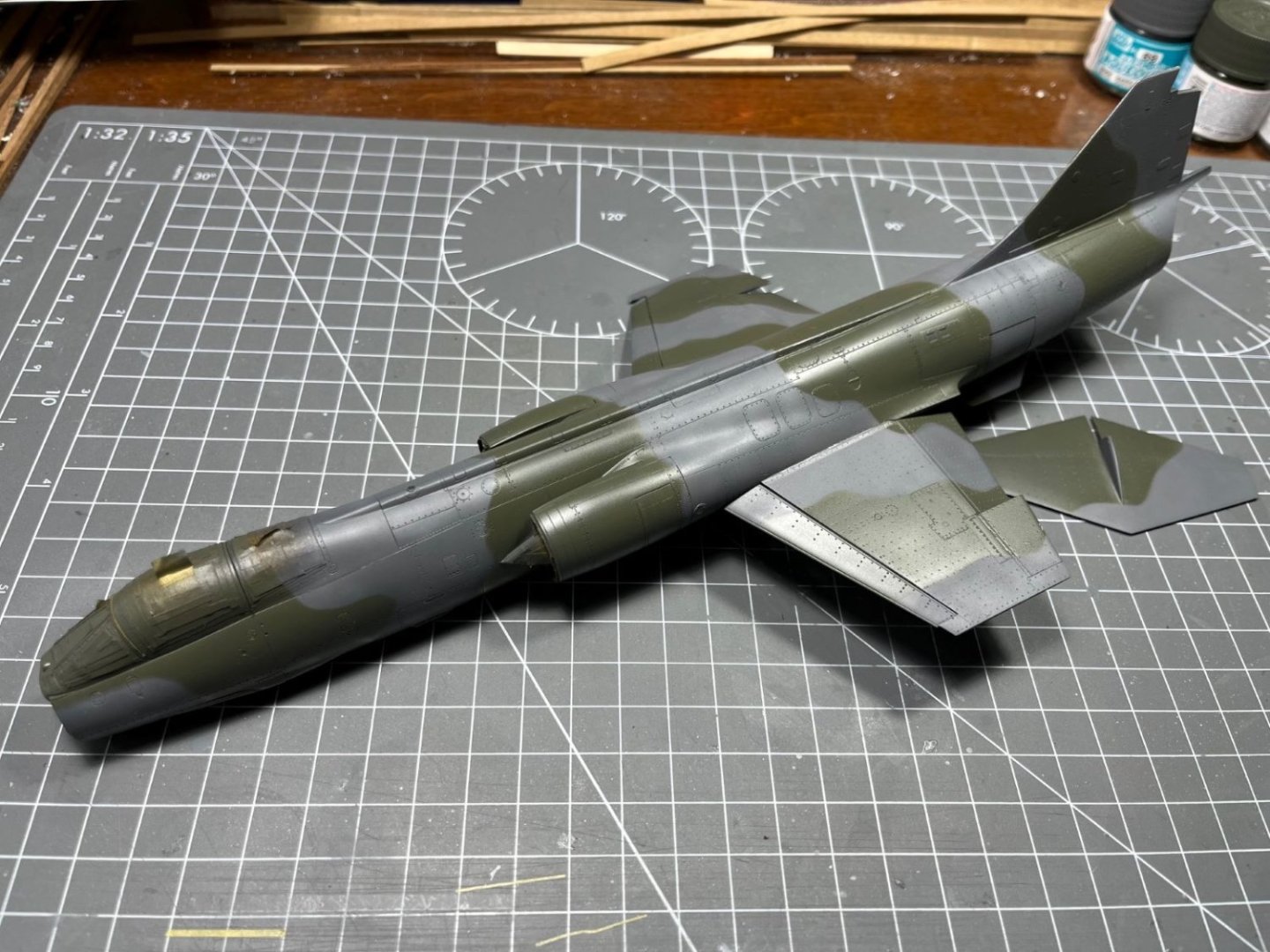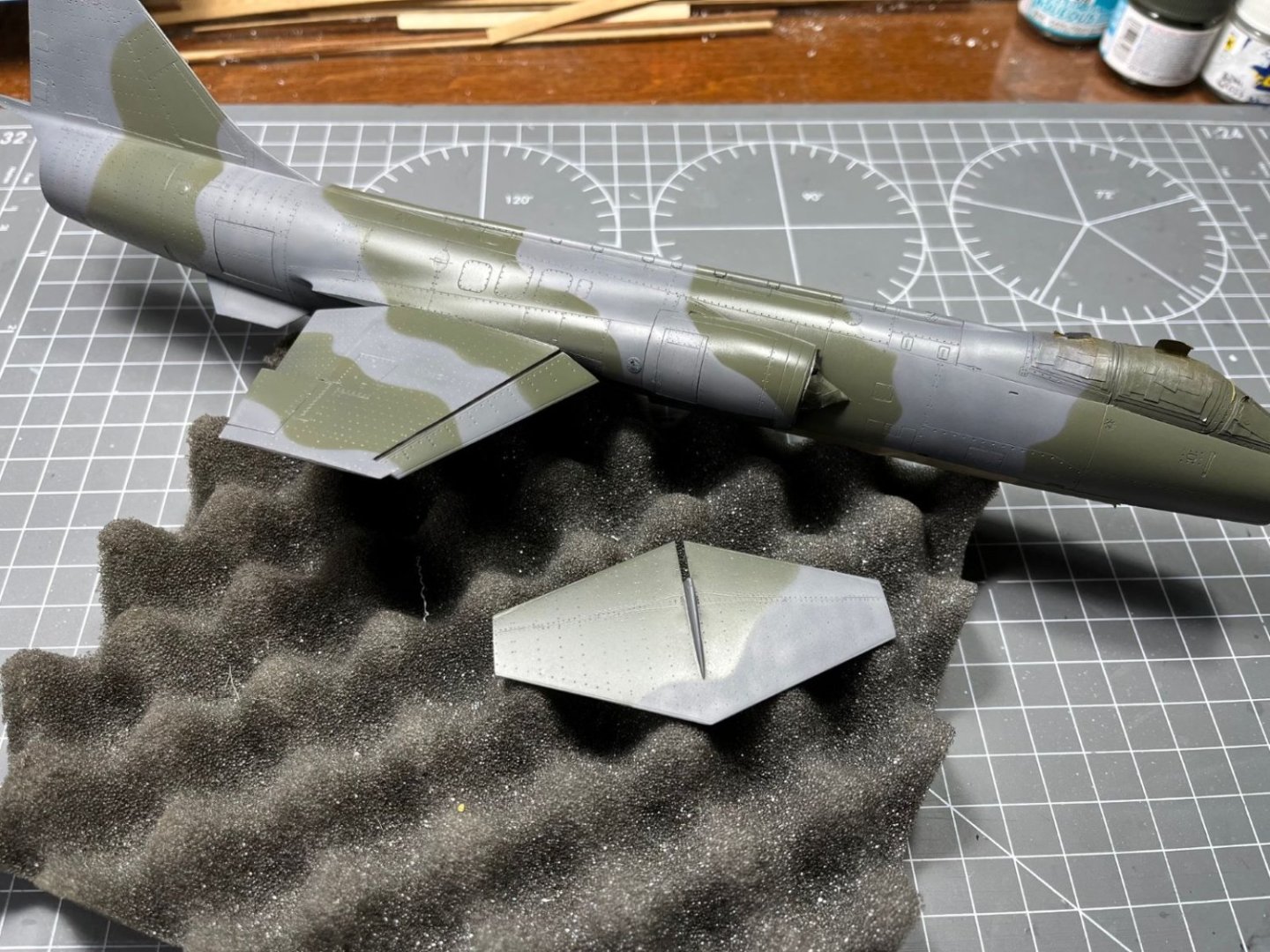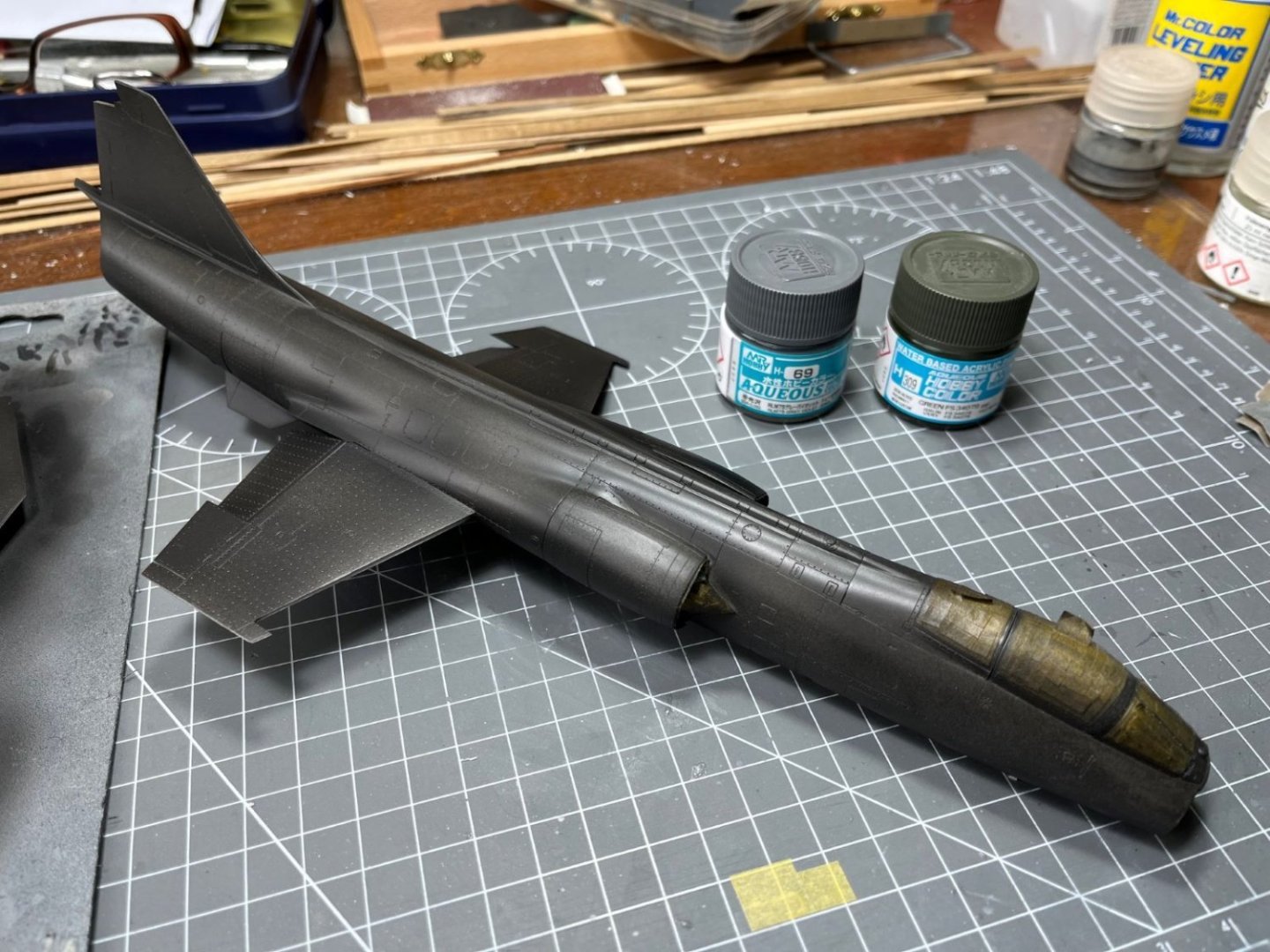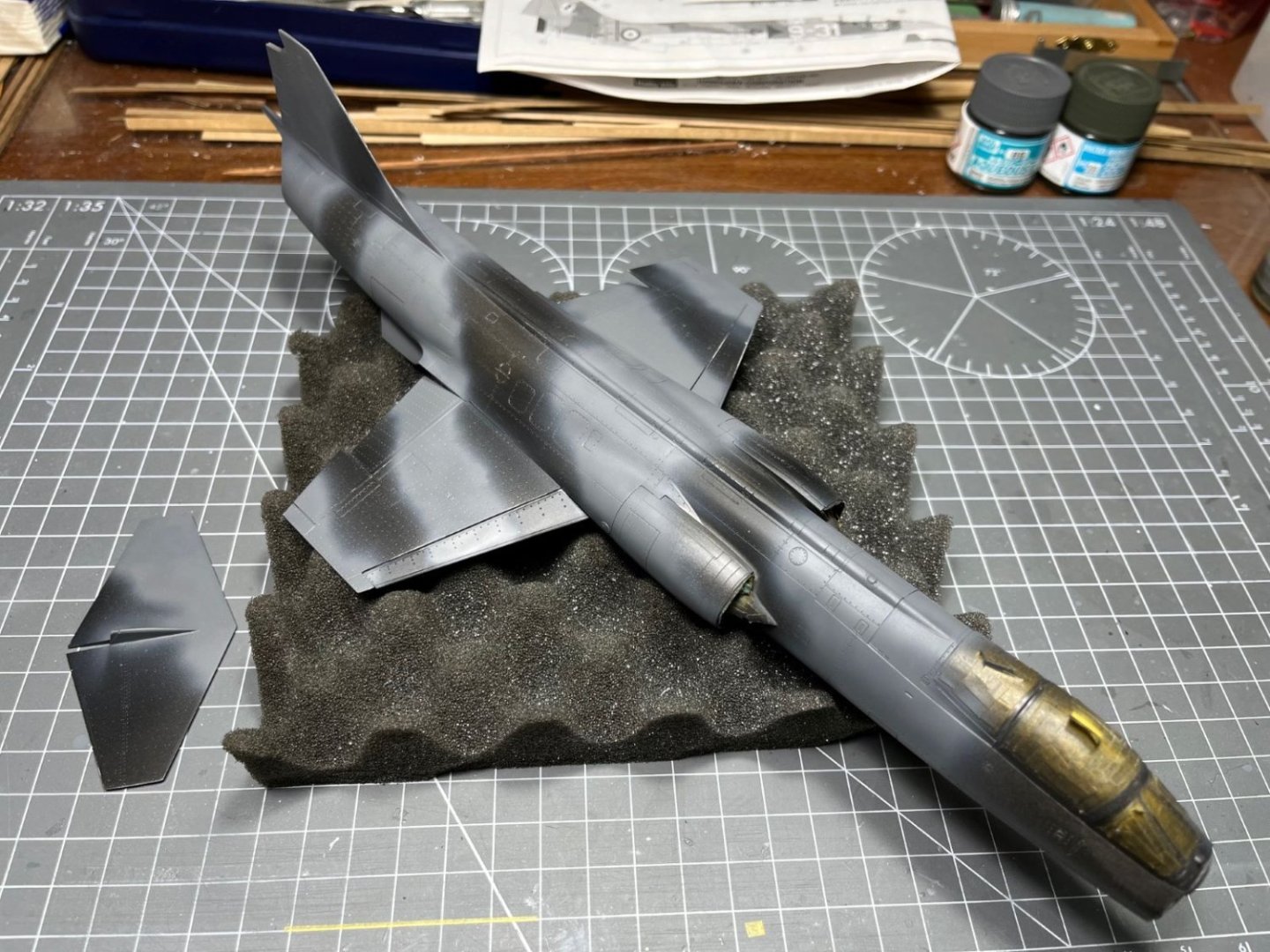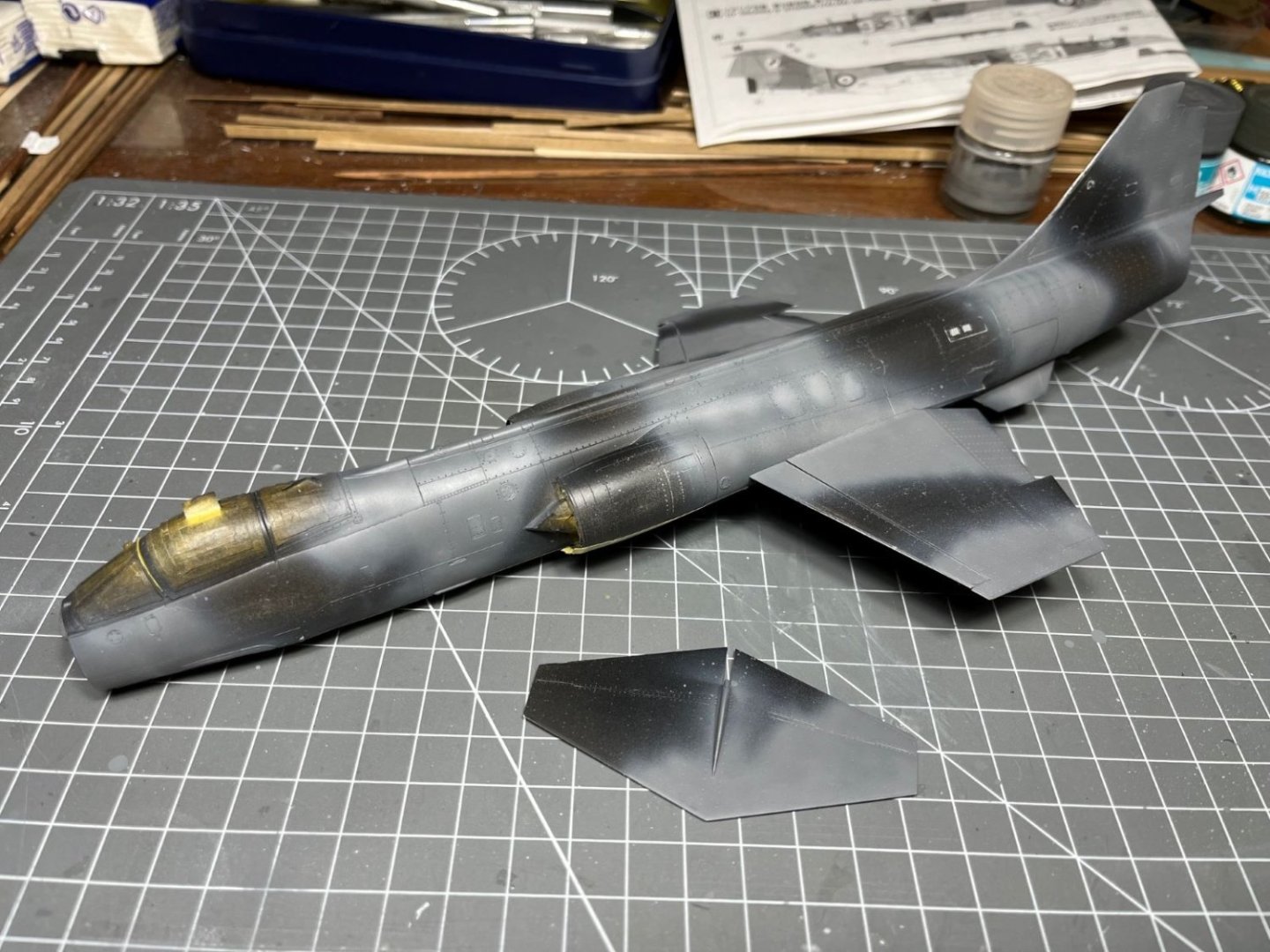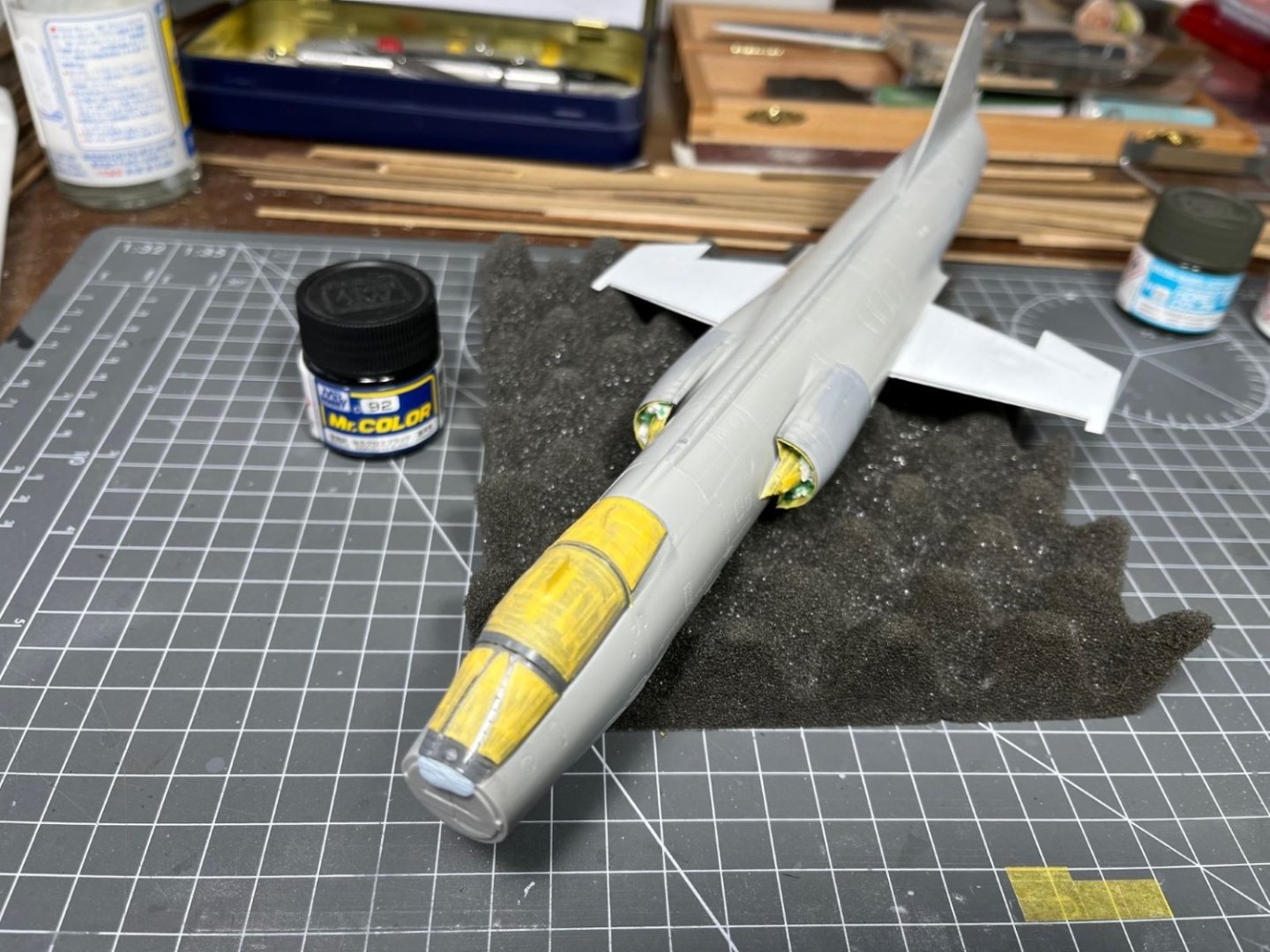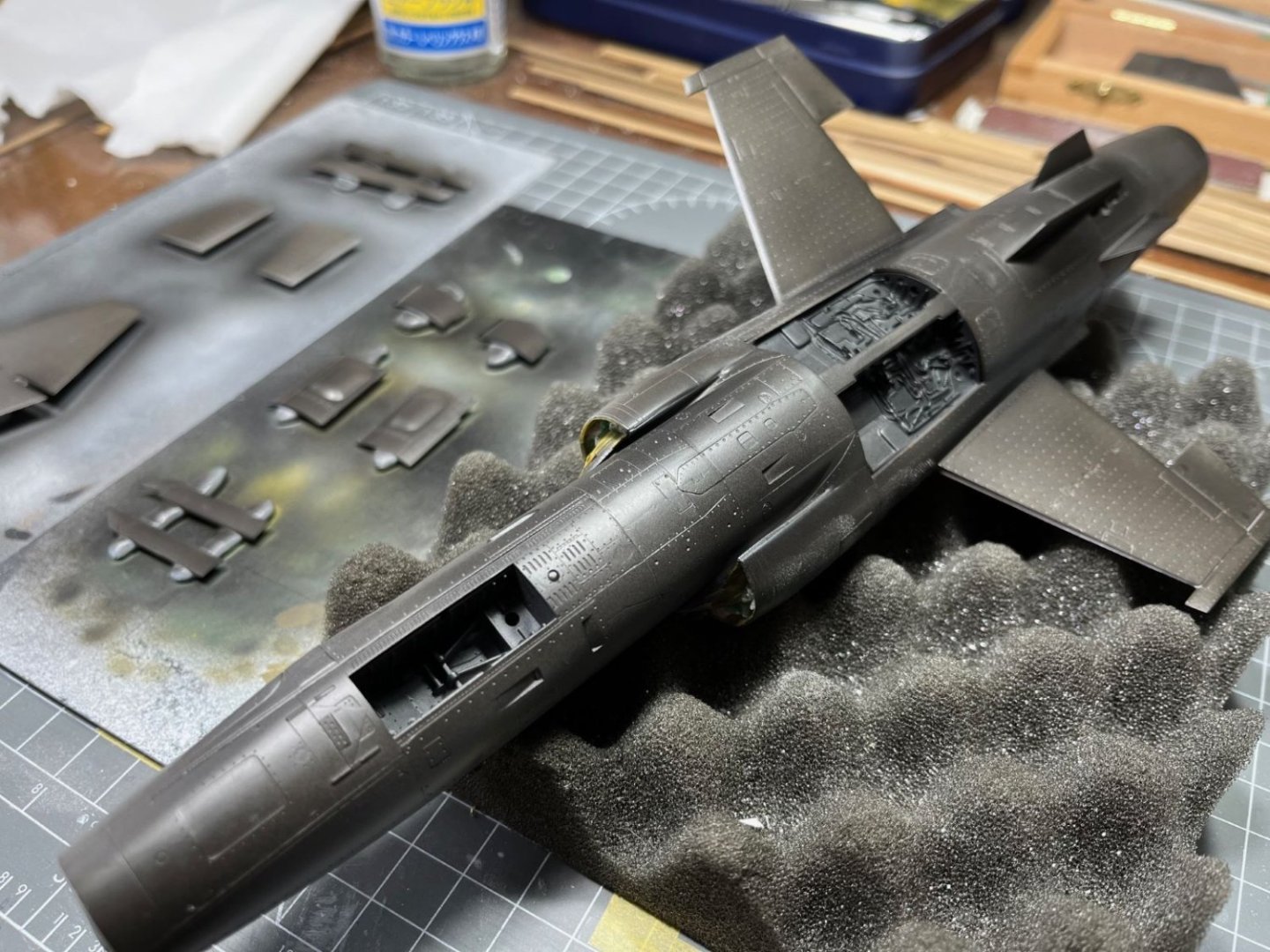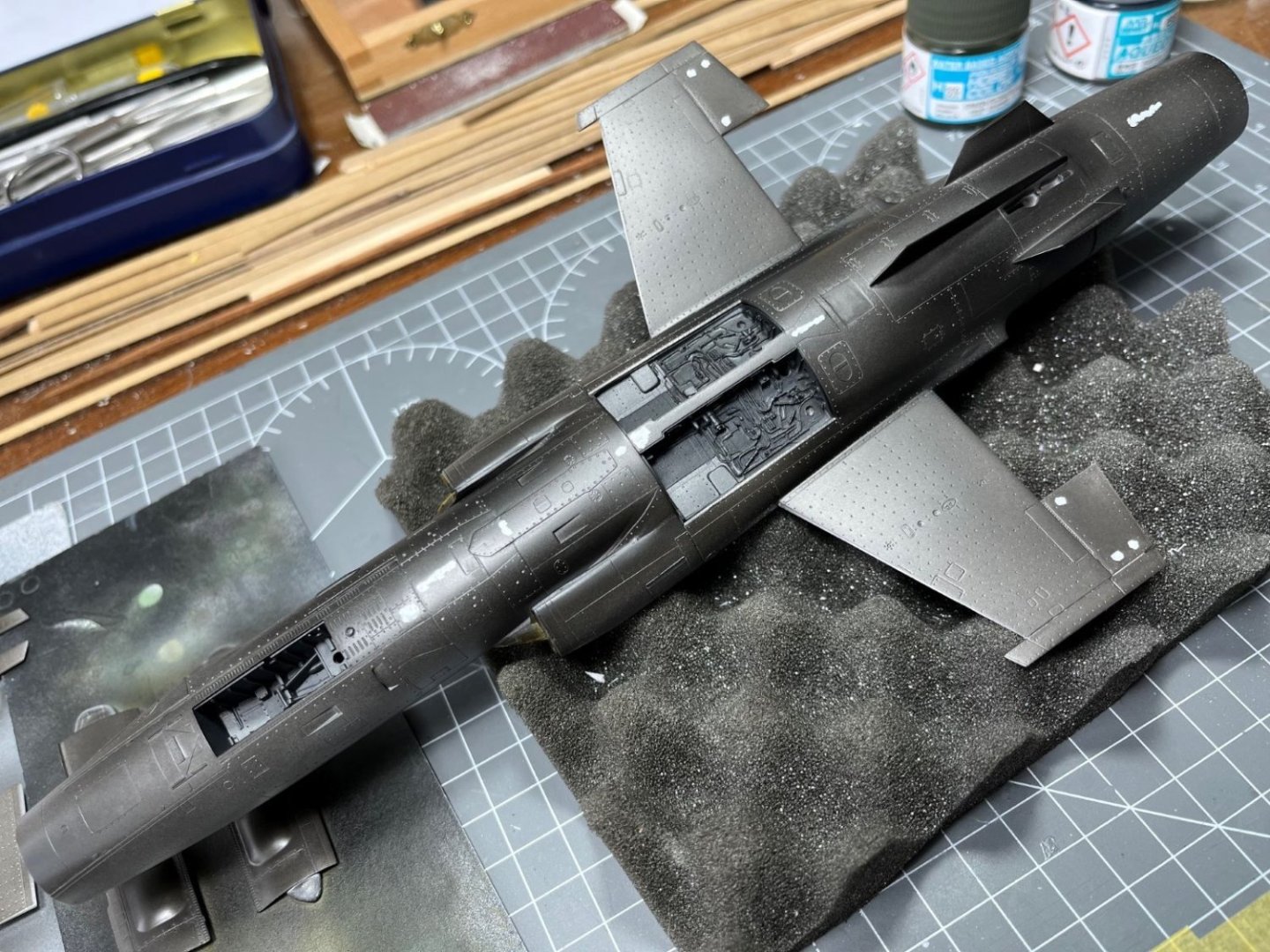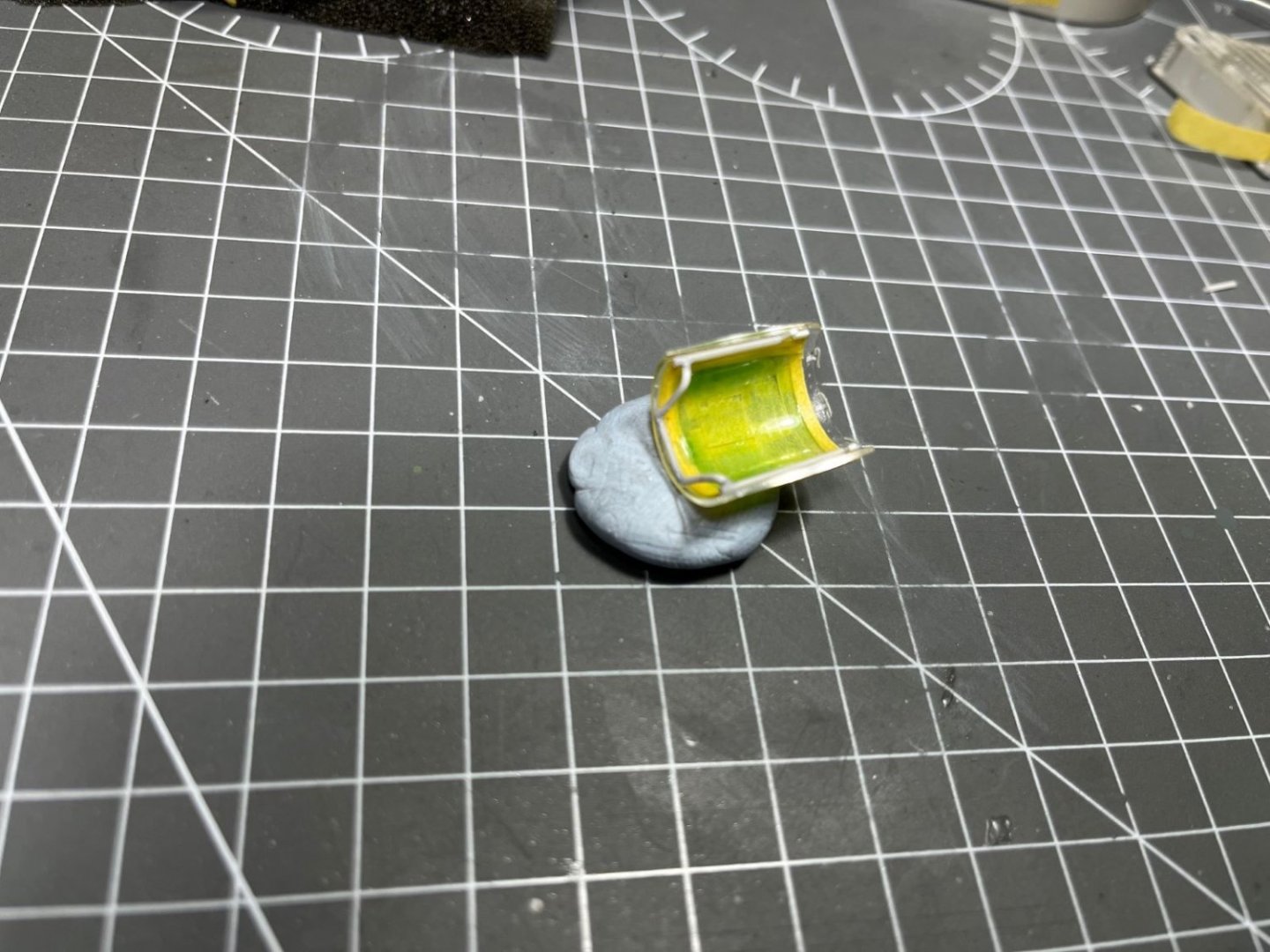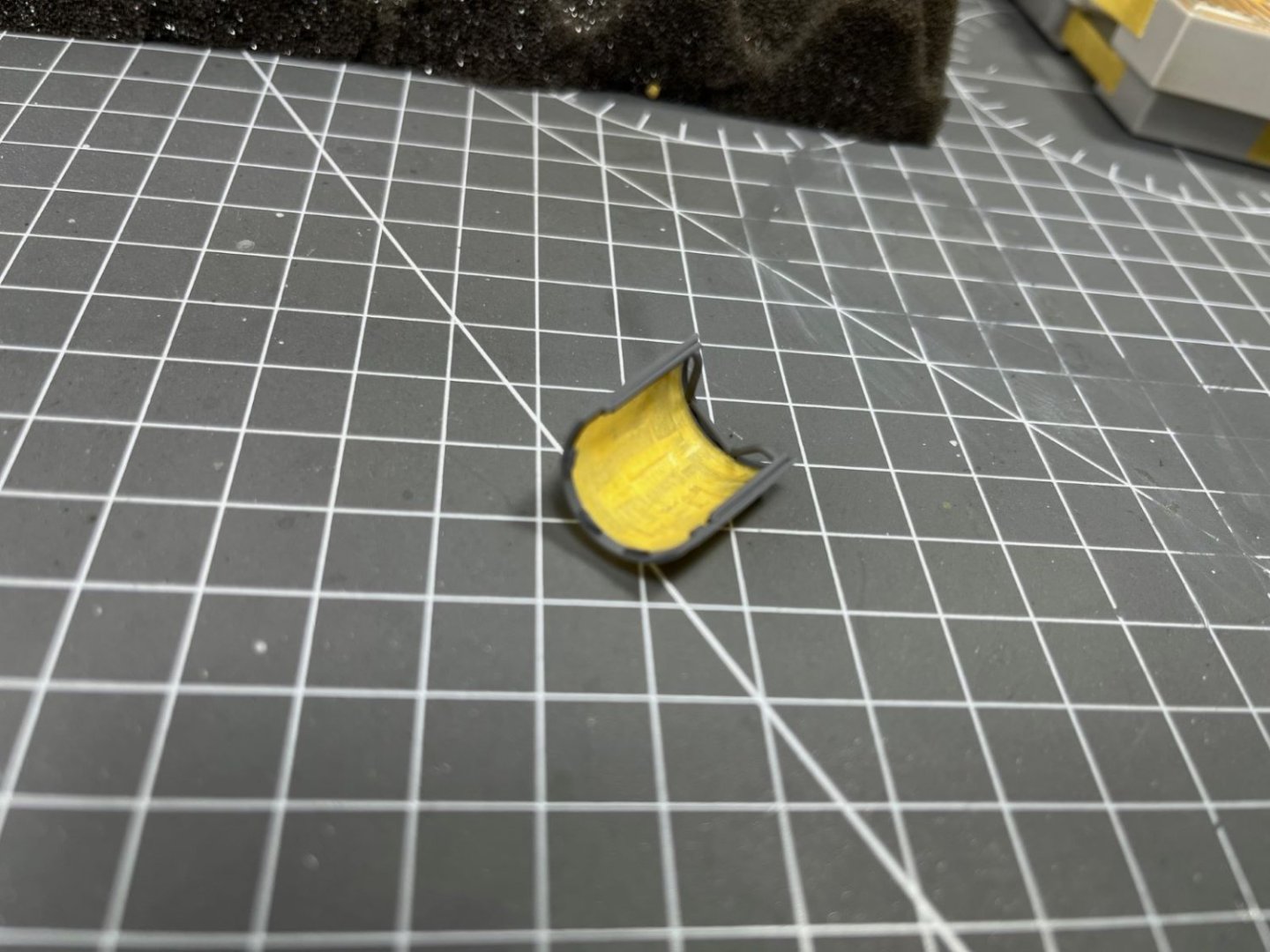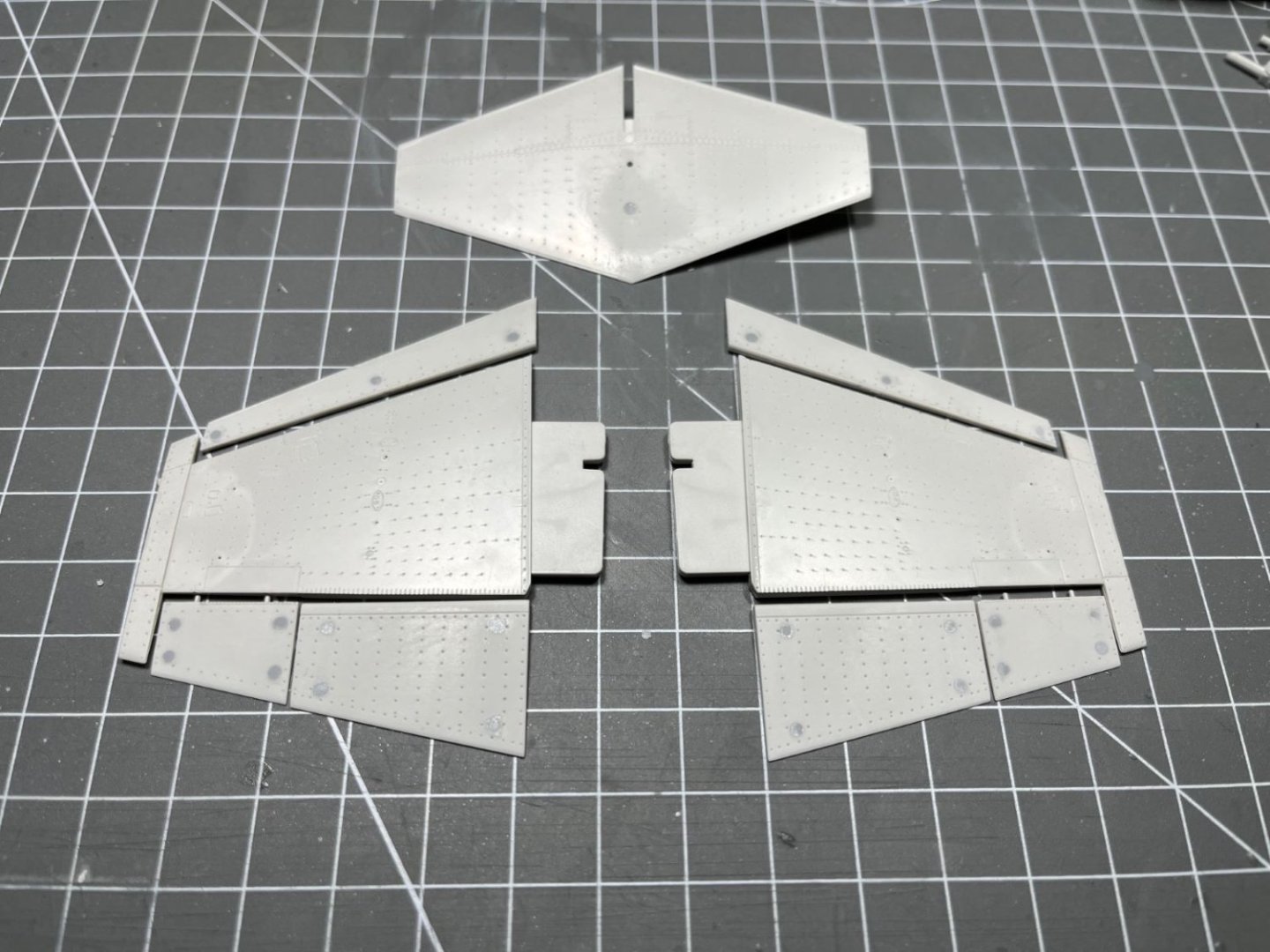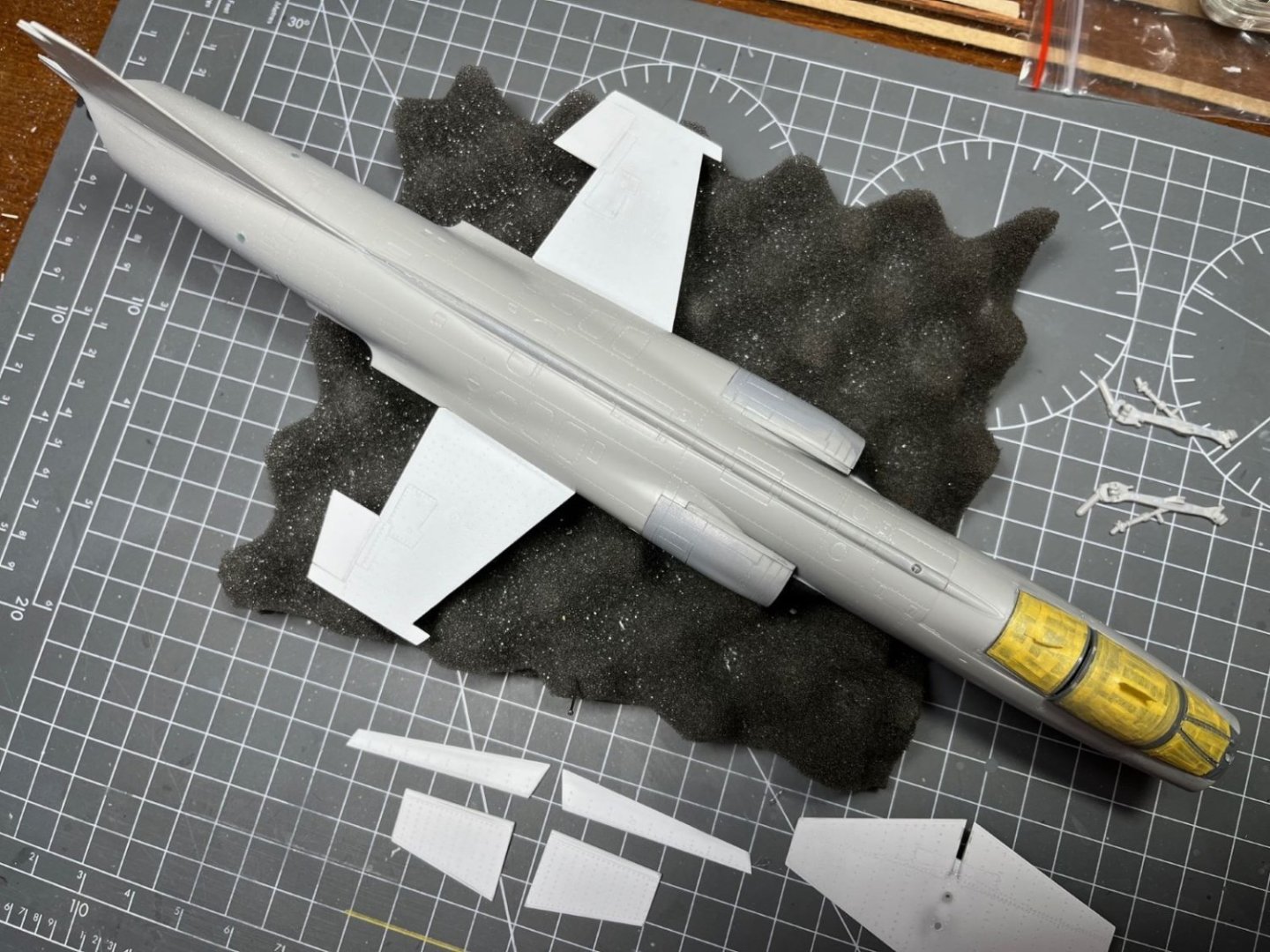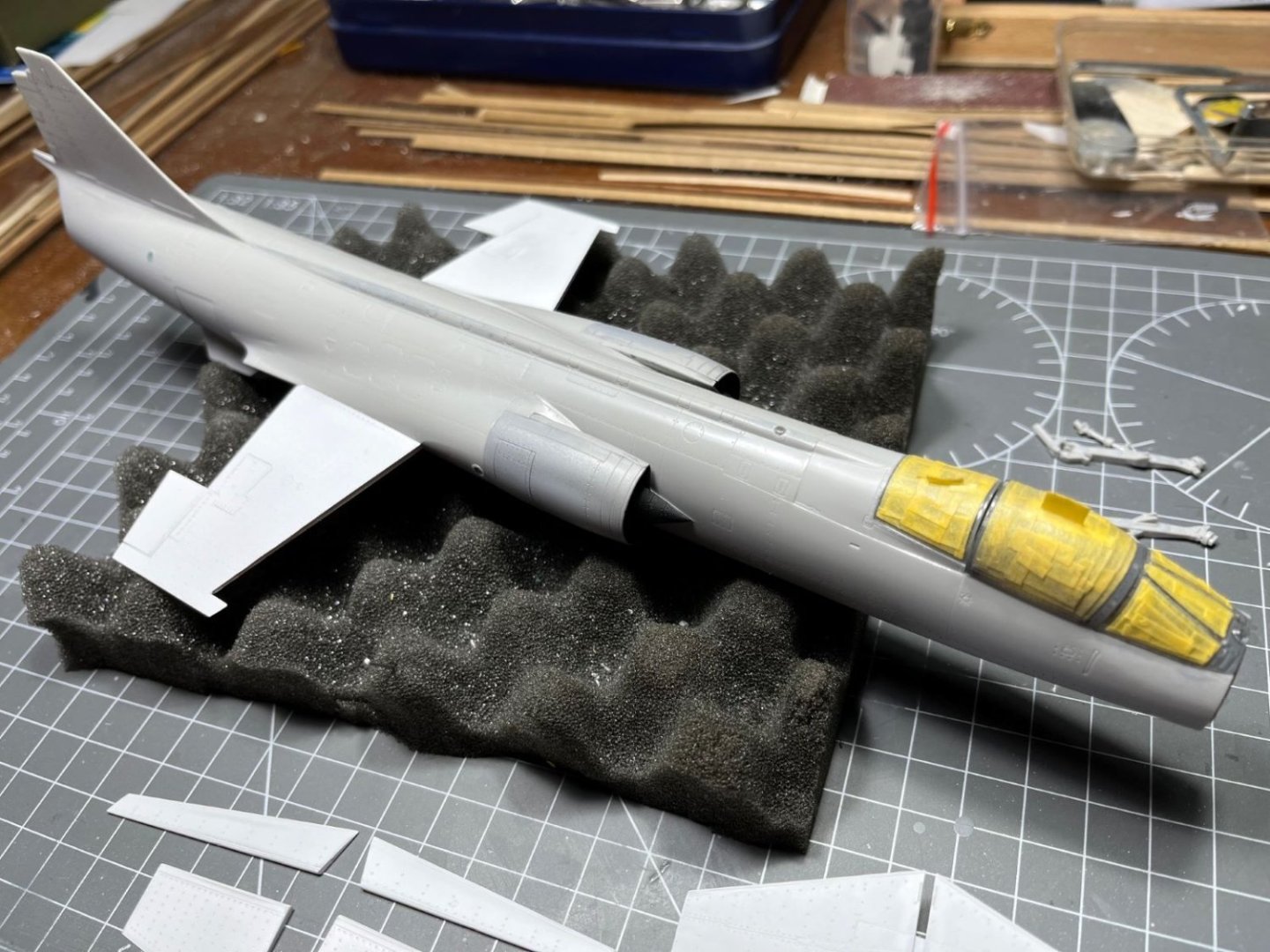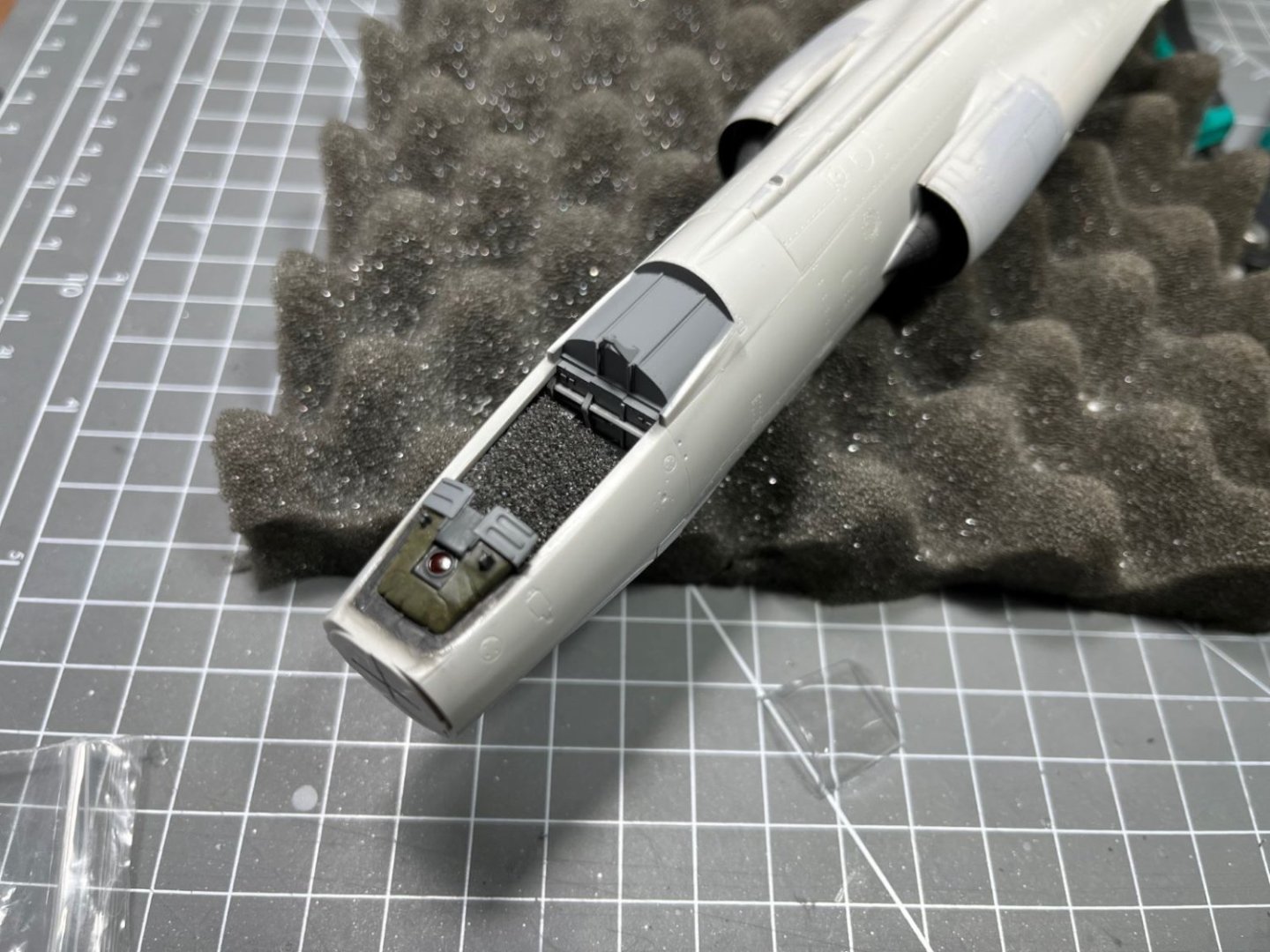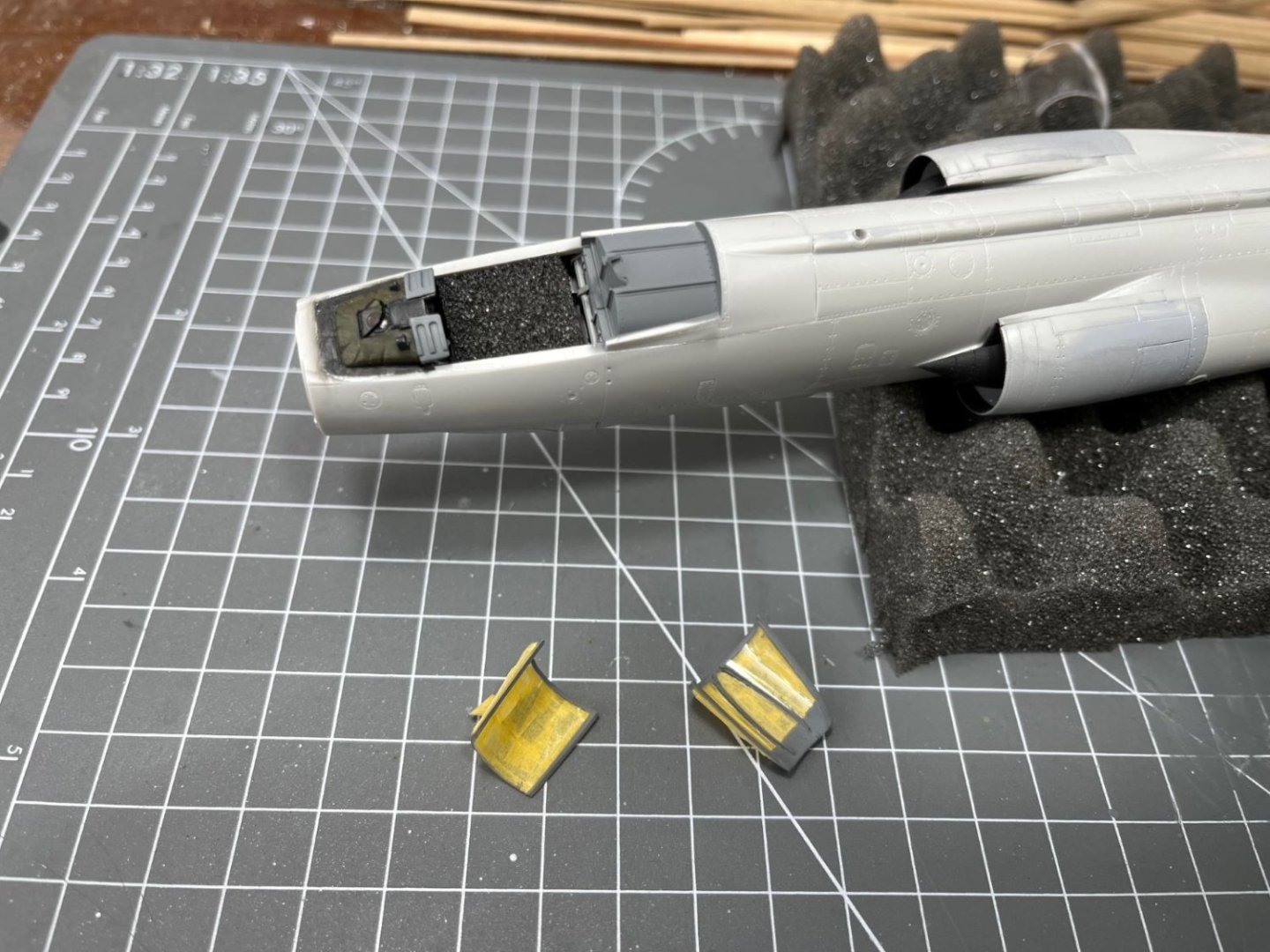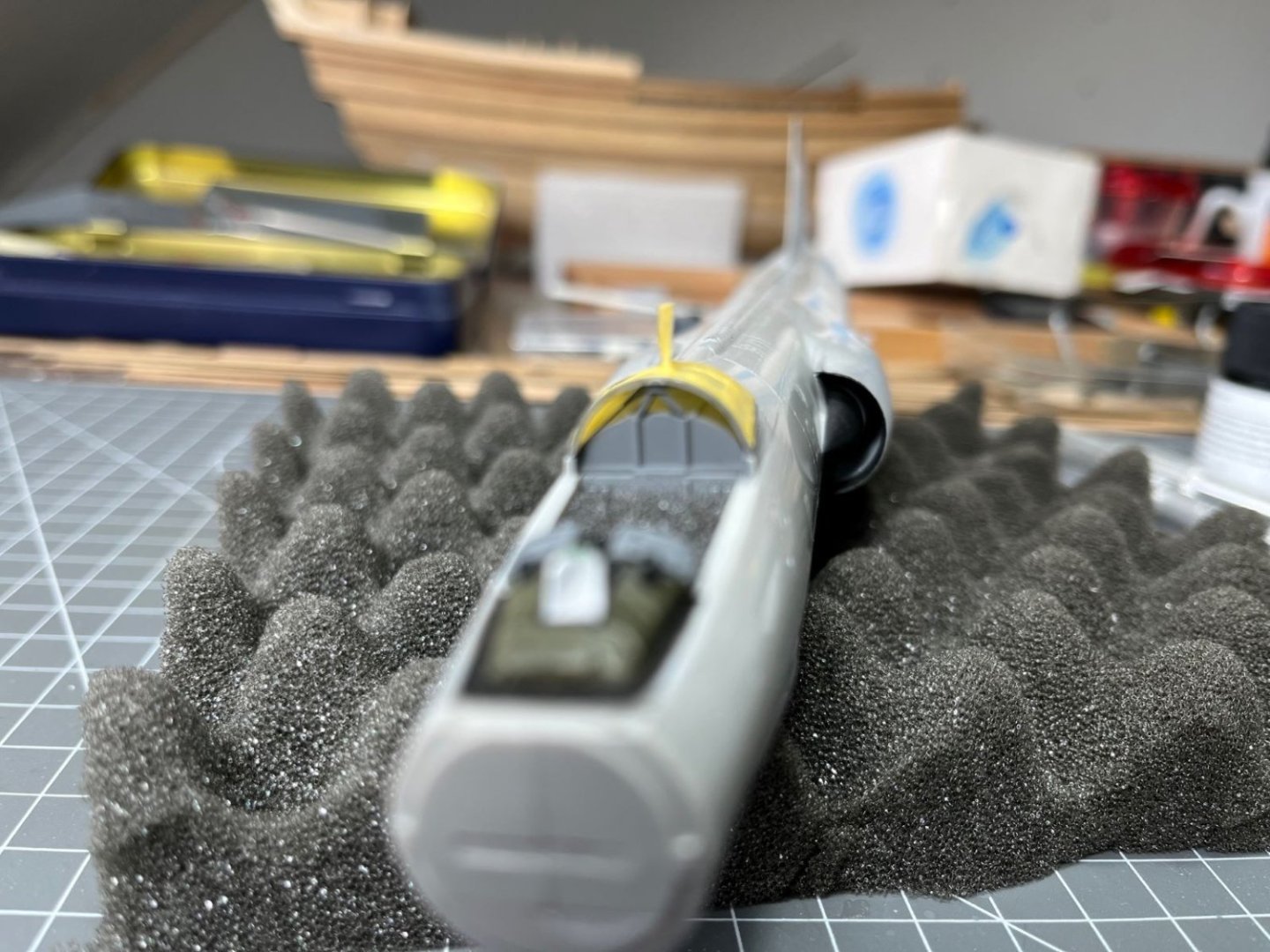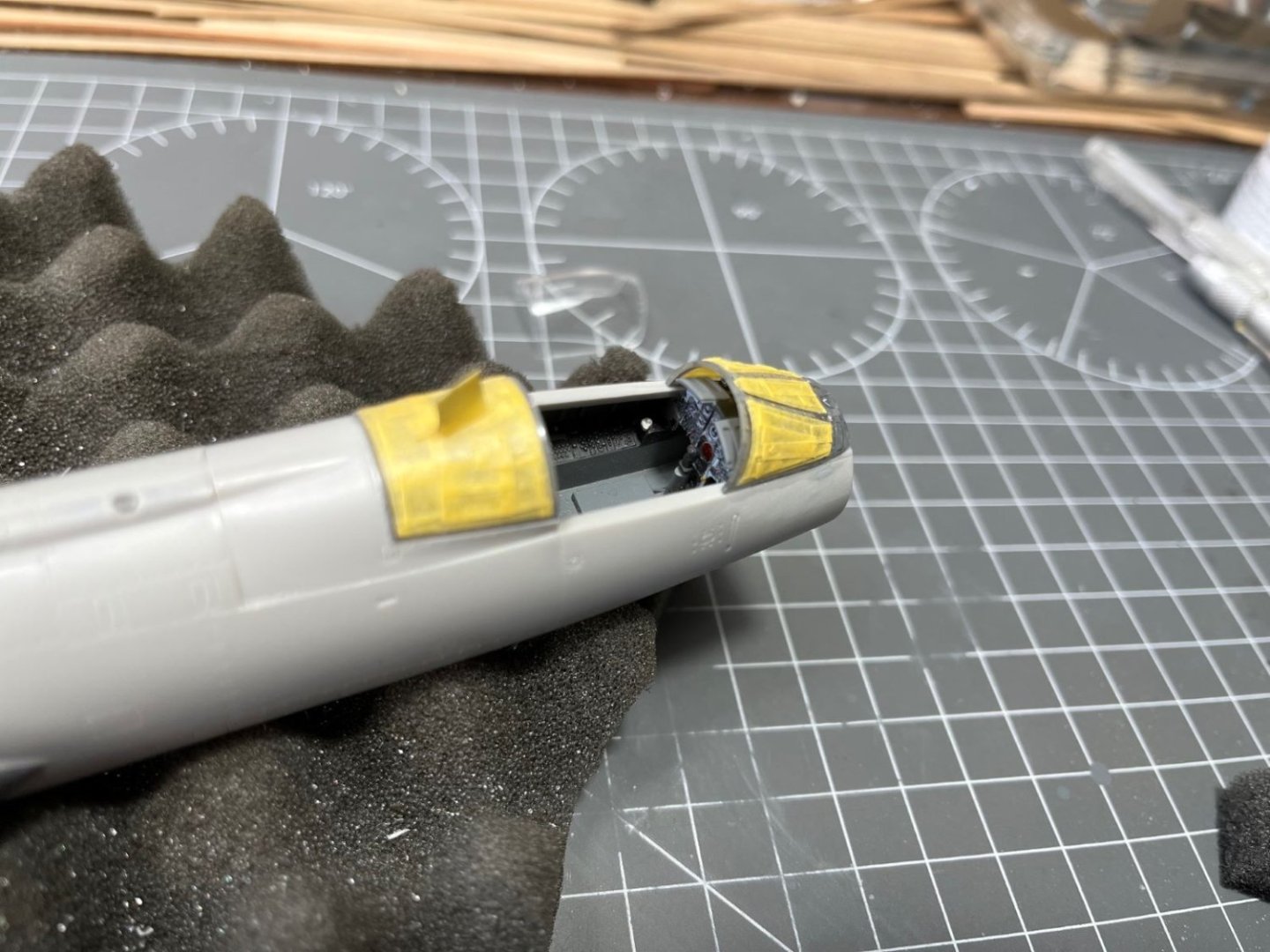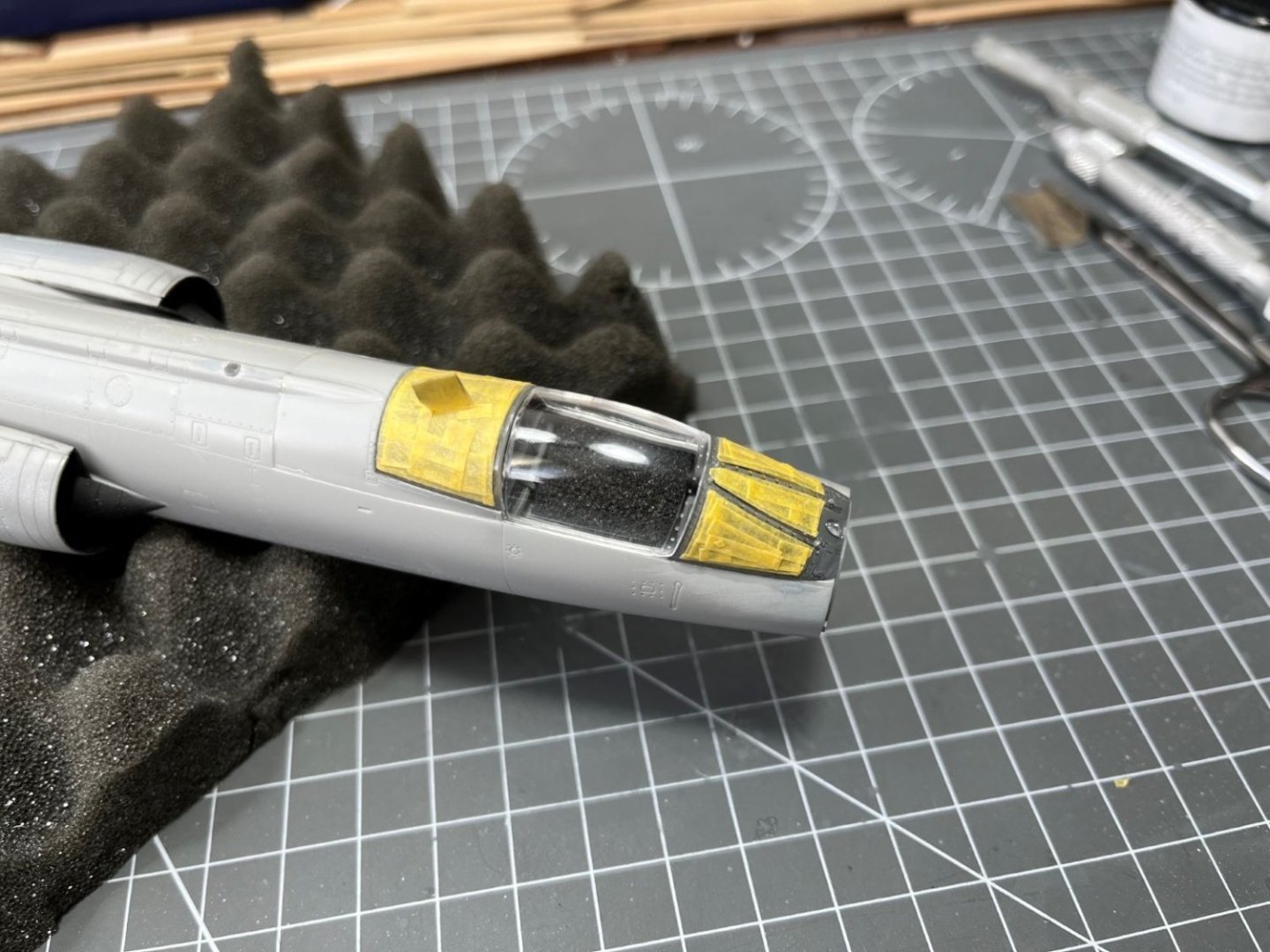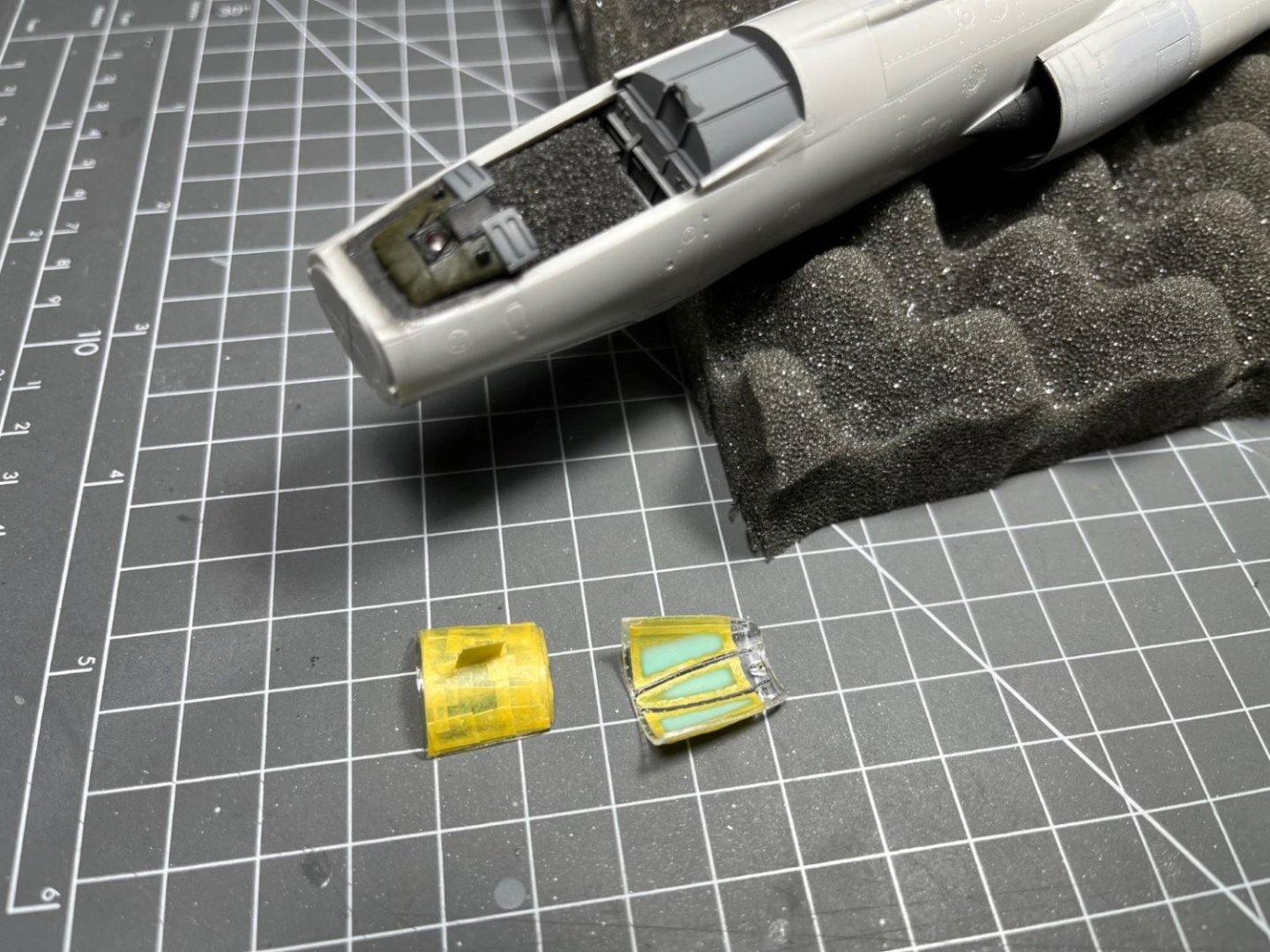-
Posts
747 -
Joined
-
Last visited
Content Type
Profiles
Forums
Gallery
Events
Everything posted by Danstream
-
.thumb.jpg.c459ce4140b54c12eddb8eedfd446df3.jpg)
1966 Buick Riviera by CDW - FINISHED - AMT - 1:25 Scale
Danstream replied to CDW's topic in Non-ship/categorised builds
My only 'negative' point of the making of the movie is that modern American actors are too big for these cars designed for Italian people of the '50s. They barely fit in there 😉. Dan -
.thumb.jpg.c459ce4140b54c12eddb8eedfd446df3.jpg)
1966 Buick Riviera by CDW - FINISHED - AMT - 1:25 Scale
Danstream replied to CDW's topic in Non-ship/categorised builds
I repeat myself, in these last two pictures of this post, I admire the way light is reflected by the flanks of the car. Smooth and regular reflections that look very realistic. Cheers, Dan PS _ By the way, just watched the movie "Ferrari", I liked it a lot, the reconstruction of Italy in 1957 is just amazing, let alone all the beautiful cars portraited in the movie. -
.thumb.jpg.c459ce4140b54c12eddb8eedfd446df3.jpg)
1966 Buick Riviera by CDW - FINISHED - AMT - 1:25 Scale
Danstream replied to CDW's topic in Non-ship/categorised builds
Fantastic result, it reflects light like a real car. You are dragging me more and more into car modeling, Craig. Cheers, Dan -
Hi all, I completed the paneling of the underside of the fuselage with a black oil color which admittedly might be a bit too stark. Then, I decided to go for a second coat of Tamiya gloss X-22 finally obtaining the good smooth finish that I wanted. Thanks to the wet sanding and two very thinned gloss coats, I obtained the good level of smoothness that I wanted and that is shown in the details below. Now, I am really ready for decaling (actually, I have still to finish the inside of the jet opening). As said in earlier posts, the original Hasegawa decals don't look that good with whites that appear creamy and I didn't like them. Fortunately, I bought from an Italian shop on the web a nice decal sheet from SkyModels dedicated to this specific aircraft with a large choice of markings. The quality of the print looks excellent (made by Cartograph) and there are plenty of different possibilities to chose from. That is all for now, I will take my time to select the group or squadron which looks coolest to me. Best regards, Dan
-
Hi all, just a small update to show that work is on going. I finished the first gloss coat on the overall airframe. Small pieces have still to be completed: Unfortunately, divots on the wings are still evident, but I will have to live with that. The rest is looking fine. In principle, I could start decaling, but I have not chosen the group squadron yet. Meanwhile, I started to work with oil colors on the wheel bay. On the front part, I used the oil colors for the panels and to discolor the glass fiber dielectric panel: Going on with the other surface details, but I believe I need another gloss layer before the decals. Best regards, Dan
-
Hi all, at the end of the last instalment, I said that I was ready to spray the gloss coat on the airframe. Well, actually I changed my mind and chose to color the remaining bits that need to be finished with a different color. The resin panels on the lower part of the fuselage: The resin panel on the spine and the black edge of the air intakes: I also removed the masking material from the air intakes. Switching to the underwing loads, I sourced the Sparrow (Aires) and the Sidewinder (Eduard) resin missiles. Unusually, the Sparrows came split in two halves, so I added a central pin to reinforce the junction. Both types are immensely better than the crude reproductions that came with my previous F-15 model. In addition, I started scratch building the underwing pylons and the launch rails from styrene plates and stocks. I will just add some rivet lines to make them more interesting. Now, I am really ready for the gloss coat. Best regards, Dan
-
That Fokker is a little beauty, very carefully done, nothing out of place. Great painting and finish. Love the laminated propeller! Cheers, Dan
-
Hi, working on touching up blemishes on the livery, I had one of my seniority moments, when re-spraying the aluminium paint, I made the masking few centimeter shy of what was needed and I got this: I hate when this happens, just a couple of tape stripes more could have avoided that. So, back to the camo colors to repair the damage. This is eventually the end result, with most of the blemishes addressed and the rudder and the leading edge slats finally glued on. In between, I also managed to finish the landing gears adding the finished wheels: A nice addition was the pitot probe that is a brass aftermarket from Master: I love these brass addition from this company in Poland, they are really sharp and accurate and can greatly enhance the usually sloppy bits like, pitot tubes, gun barrels, etc. Here the nose cone is just dry tested. I wonder how many times I will knock it off before the end. Finally, another picture of the overall airframe this time taken with natural light to better appreciate the real hue of the camouflage colors: Now everything is ready for the gloss coat which I will spray after the paint touch-ups are well cured. Meanwhile, I have to start thinking of the external loads, having Hasegawa provided only the tip tanks in the kit. Cheers, Dan
-
Indeed, I refrained to comment earlier, but the earlier yellow was too 'cold', now it is much better. To many, red is the color for a Ferrari, but, personally, I think the nothing can beat a yellow Ferrari. Coming back to the color, I read that the best substrate for yellow is actually pink. I am surprised and I never tried it, just mentioning as a curiosity. Very nice work on your Ferrari, curious to see more. Dan
-
Hi, I went on with the main airframe, I wanted to apply the remaining aluminium paint on the underside. The Italian painting scheme of the '70s had the underside painted with a matt aluminium which I am replicating with Metallic color 'white Aluminium' by Vallejo. The finish of this paint isn't matt, but it doesn't matter because it will be adjusted to the correct finish. Here is the model ready to be sprayed: Here the result: The demarcations with the camouflage are quite ok, with only few oversprays to be addressed: The overall look resembles quite well the scheme seen in period pictures (and it also matches my memories). Now, while the paint cures, I will continue with the small parts. Best regards, Dan
-
Hi Mike, thanks for your comments. About you question about wet sanding, in preparing the model, I went through progressively finer sanding, smoothing and rescribing or rebuilding details in specific areas. Even after priming these areas, I found blemishes to be addressed and locally sanded down to 1000 grit, sometimes wet. After the final coat of priming (1), when no blemishes were found anymore (or almost), I went through the complete model with a wet 2000 with the paper well soaked in water and with a very light touch. This eliminates any possible granularity of the paint and left the surface as smooth as silk. This was a good start for the camo colors. Possibly, I will sand the entire airframe after the clear coat with even finer grits (3000 or 4000, always wet) and even after the sealing of the decals. At the end, my aim is to have a silk smooth finish that even with a matt coating will possibly reflect light as an 'egg shell' imitating as far as possible the light reflections seen in pictures. This is an approach that works well for me and every time I try new procedures, but be aware that is easy to remove too much color and spoil the work done until then (2). Happy modeling, Dan (1) Note that if you insist with priming you might obliterate surface details. In this build, I intentionally tried to obliterate details (as much as practical) on wings and tail surface. (2) For this, I have procured sanding pads with grits from 3000 to 12000, although I never used the finest range which I believe are good for glossy finish of car models.
-
Hi all, a small update of my build, while working on the camouflage, I started to work also on the preparation of the landing gear pieces. I cleaned all the parts, filling extractor marks and furnishing them with some wiring simplifying what seen in the pictures of the real thing. Then a black primer followed: Finally, I sprayed them with a metallic white alumimium along with their L.G. bay doors. At the end, I picked up some details with Tamiya black and brown panel accent liners. I will complete them with little placards that I will obtain from pieces of black decals. Landing gears are one of my favorite subject and generally, with little attention they can be improved quite a bit. That is all for now, Best regards, Dan
-
Hi, I went on with the camouflage and prepared the masking for the dark green. Instead of preparing paper masks, I eventually decided to go with rolls of blu-tack. For the green, I used the Gunze H-309 which is supposed to be a good match for the Italian Verde Scuro 26 (FS34086), although it turned out a tad too light in my view. The blu-tack rolls were supposed to deliver a slightly feathered edges, but, instead, this effect is almost unnoticeable. At any rate, the paints went on very smoothly and I think the result is quite acceptable and resemble very much a NATO finish of the '70s. Only few touch ups here and there will be necessary. Next step will be the aluminium paint on the bottom to conclude the main paint job of the airframe. Best regards, Dan
-
Hi, I completed the black coat and after having corrected the little defects, I got a black Starfighter: After an overall wet sanding with 2000 grit, I started with spraying the camo colors. The first color, in the Italian denomination Grigio Mare Scuro 27 – FS36152 (dark sea grey) corresponds well with Gunze H-69. The original grey paint underwent to quite a noticeable discoloration on the real aircraft (differently from the green), hence I started with adding a little white to the paint and sprayed it in random patterns to get a non-uniform coverage. To represent the patchy appearance showed by pictures of the aircraft, I added mottles of paint with more white added in it. Now, I need to prepare paper masks before spraying the green. Best regards, Dan
-
I prepared the airframe and various other parts for being sprayed. I blanked off the air intakes and provisionally attached the canopy hood. The Italian F-104s had the underside painted with a flat aluminium paint, therefore, in preparation for that, I sprayed a very light coat of satin black to uniform the colors of the various parts and give more depth to the aluminium paint. I kept the paint very thin to avoid to obliterates too much the nice surface details. Unfortunately, a close inspection revealed few blemishes on the surfaces that required to be addressed, being the aluminium paint absolutely unforgiving. I applied on these areas some Mr. Surfacer 500 which now need to be smoothened out. Being slowed down by these touches up, I am thinking of changing painting strategy and tackle the camo before the lower surfaces. Let's see, I will let you know. Best regards, Dan
-
Thank you Alan, I hope to have more spare time in 2024 and to continue at a faster pace. However, although this model is still quite nice, it is demanding more time than what I had expected. Yes Ken, the wing loading was obviously high and for the version S was even higher, clearly, the turn radius was consequently large despite the L.E. slats and the blowed flaps. Definitively, it was not designed for dogfighting. As said above, it was not a dogfighter. The razor sharp L.E. was a direct application of theory which required that to have shock waves attached to the L.E. with no subsonic pockets. The version S had the more powerful J79-GE-19. The design of the J-79 is an amazing piece of engineering. Thanks for all the likes and comments. Dan
-
Please find an update before the festivities break. I went on with masking the canopy hood inside and outside and added tubes and rear mirrors to it. A gray was sprayed inside (excuse the picture out of focus): Then, I started working of the wings. The parts are finely engraved with surface details and divots to represent rivets. I had to fill up few extractor marks too. Although the details are very fine, there is a problem with that. In fact the real wings have all the rivets puttied and hence virtually invisible. I didn't want to fill all of them with putty, therefore I am just applying a heavy coat of Tamiya primer just to lightly mute them down and live with that. I always get surprised by how often I find myself trying to fill up kits with existing rivets and riveting kits that don't have them. Once mounted on the fuselage, the surprising proportions of this plane become evident. I can't help noticing the incredibly small wing surface of this plane. Clearly, lift is proportional to squared velocity and a large surface is not needed when you have a large velocity, but the problem is that to get there you have to start from low velocities ...🙂 The futuristic iconic shape of the Starfighter is now almost complete. I take the opportunity to wish you all a great and peaceful Christmas together with your beloved ones whatever is your creed or belief. Yours, Dan
-
Hi, I have been away from the hobby quite some time, now I am back and still working on the fuselage. I painted parts with Dark Sea Grey which looks more suited for the interiors than the previous greys. I needed to rebuilt the inverted 'V' support behind the seat because the top of the original part was ending in the middle of the transparent instead of supporting the arch of the transparent edge. A very little detail which nevertheless disturbed me. Then, the HUD screen went on and the transparents were masked inside and outside. In the following image, although out of focus, I tried to show how the 'V' support looks after my modifications. Finally, the fore and aft transparent parts are glued on. Central hood will need to be masked and furnished now. Not much, but necessary time consuming steps. Best regards, Dan
About us
Modelshipworld - Advancing Ship Modeling through Research
SSL Secured
Your security is important for us so this Website is SSL-Secured
NRG Mailing Address
Nautical Research Guild
237 South Lincoln Street
Westmont IL, 60559-1917
Model Ship World ® and the MSW logo are Registered Trademarks, and belong to the Nautical Research Guild (United States Patent and Trademark Office: No. 6,929,264 & No. 6,929,274, registered Dec. 20, 2022)
Helpful Links
About the NRG
If you enjoy building ship models that are historically accurate as well as beautiful, then The Nautical Research Guild (NRG) is just right for you.
The Guild is a non-profit educational organization whose mission is to “Advance Ship Modeling Through Research”. We provide support to our members in their efforts to raise the quality of their model ships.
The Nautical Research Guild has published our world-renowned quarterly magazine, The Nautical Research Journal, since 1955. The pages of the Journal are full of articles by accomplished ship modelers who show you how they create those exquisite details on their models, and by maritime historians who show you the correct details to build. The Journal is available in both print and digital editions. Go to the NRG web site (www.thenrg.org) to download a complimentary digital copy of the Journal. The NRG also publishes plan sets, books and compilations of back issues of the Journal and the former Ships in Scale and Model Ship Builder magazines.





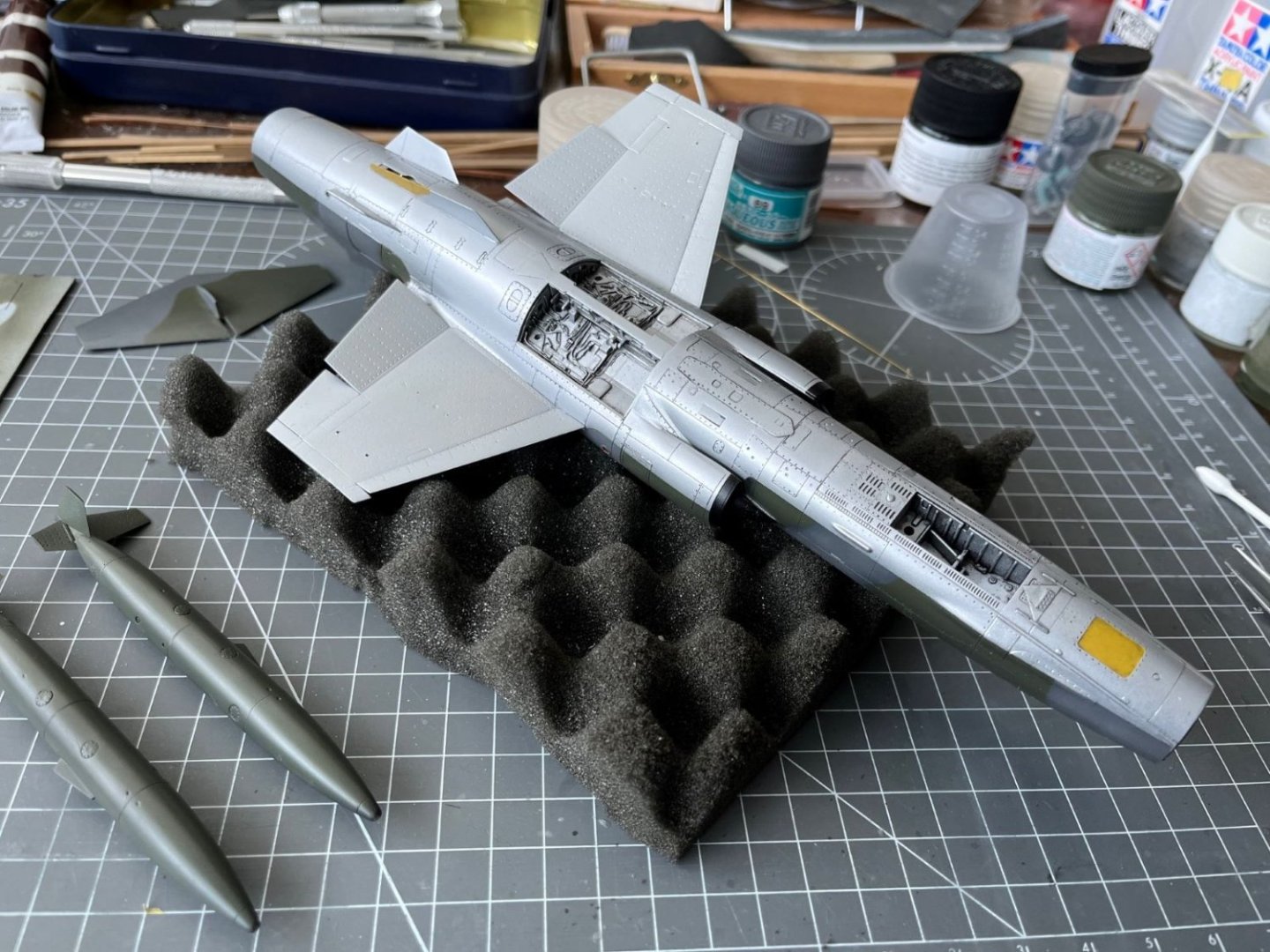
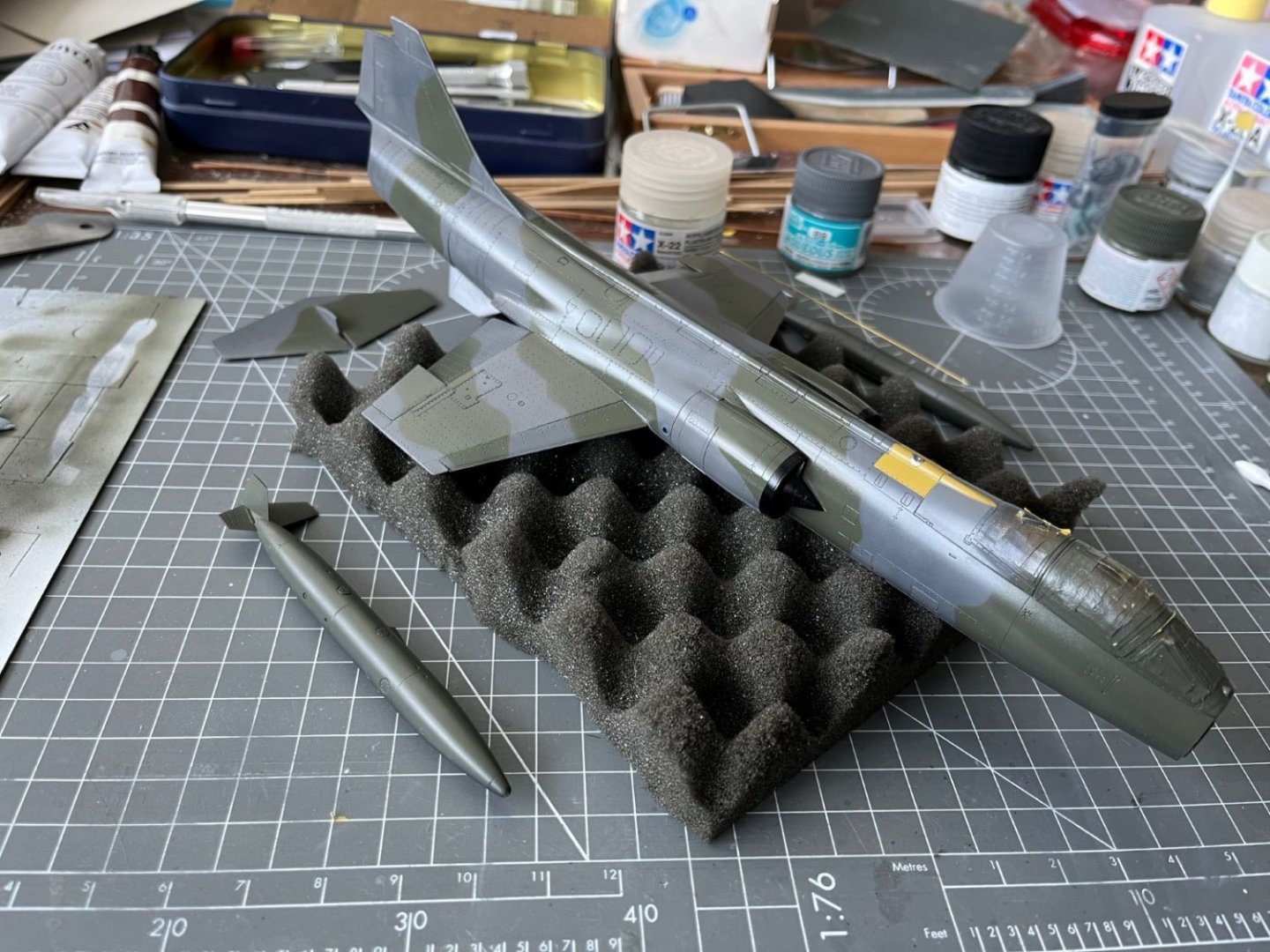
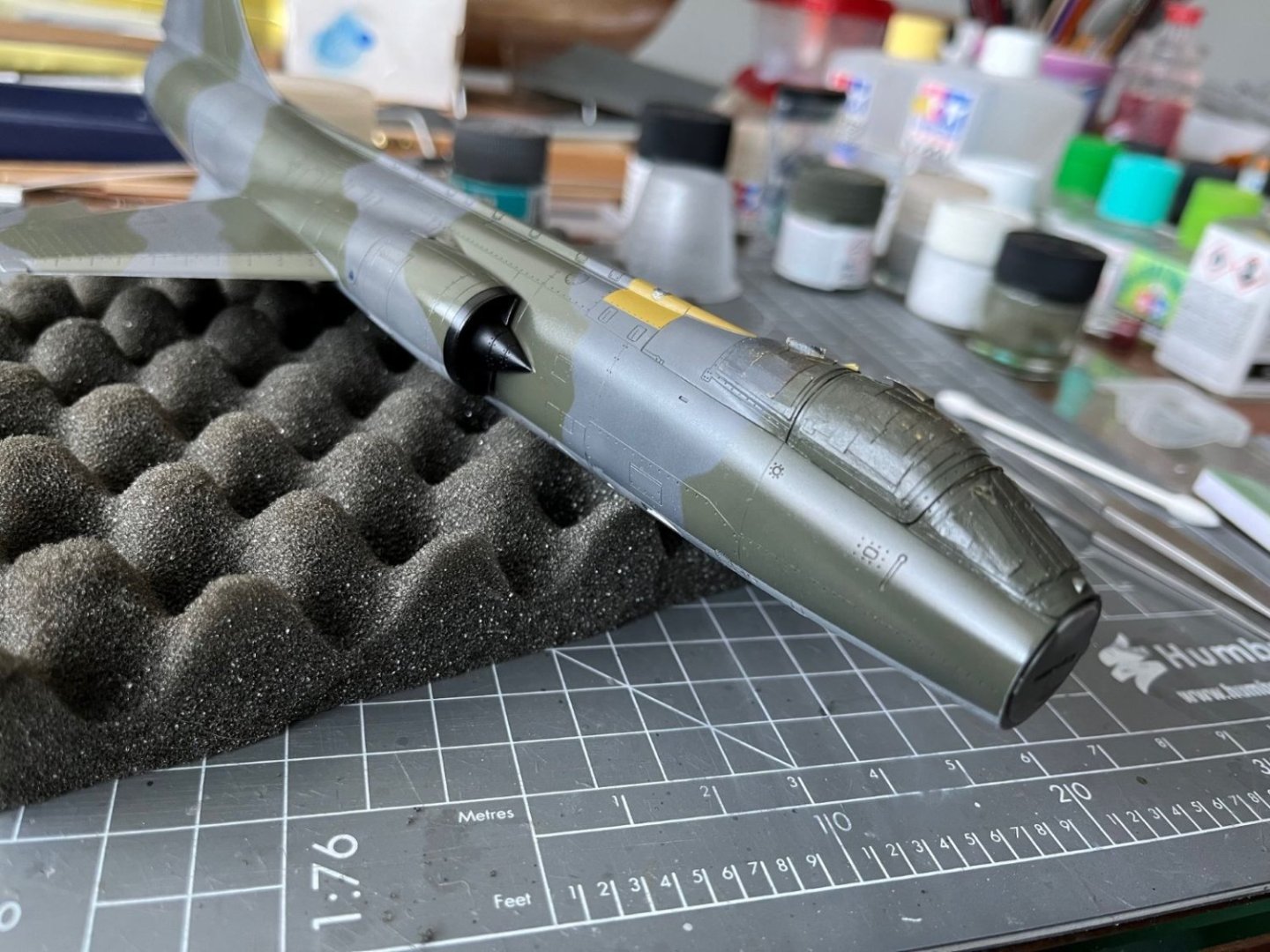

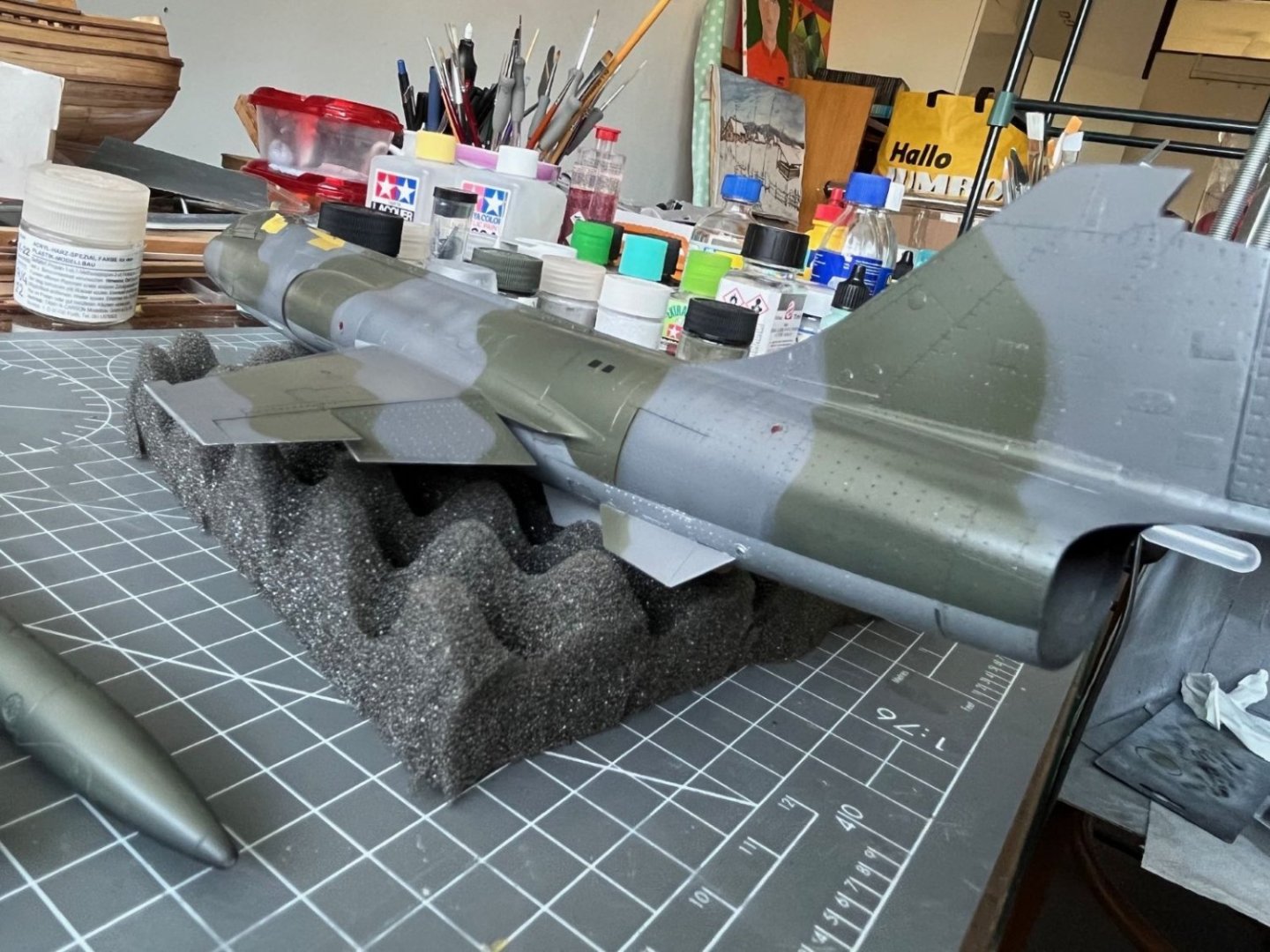
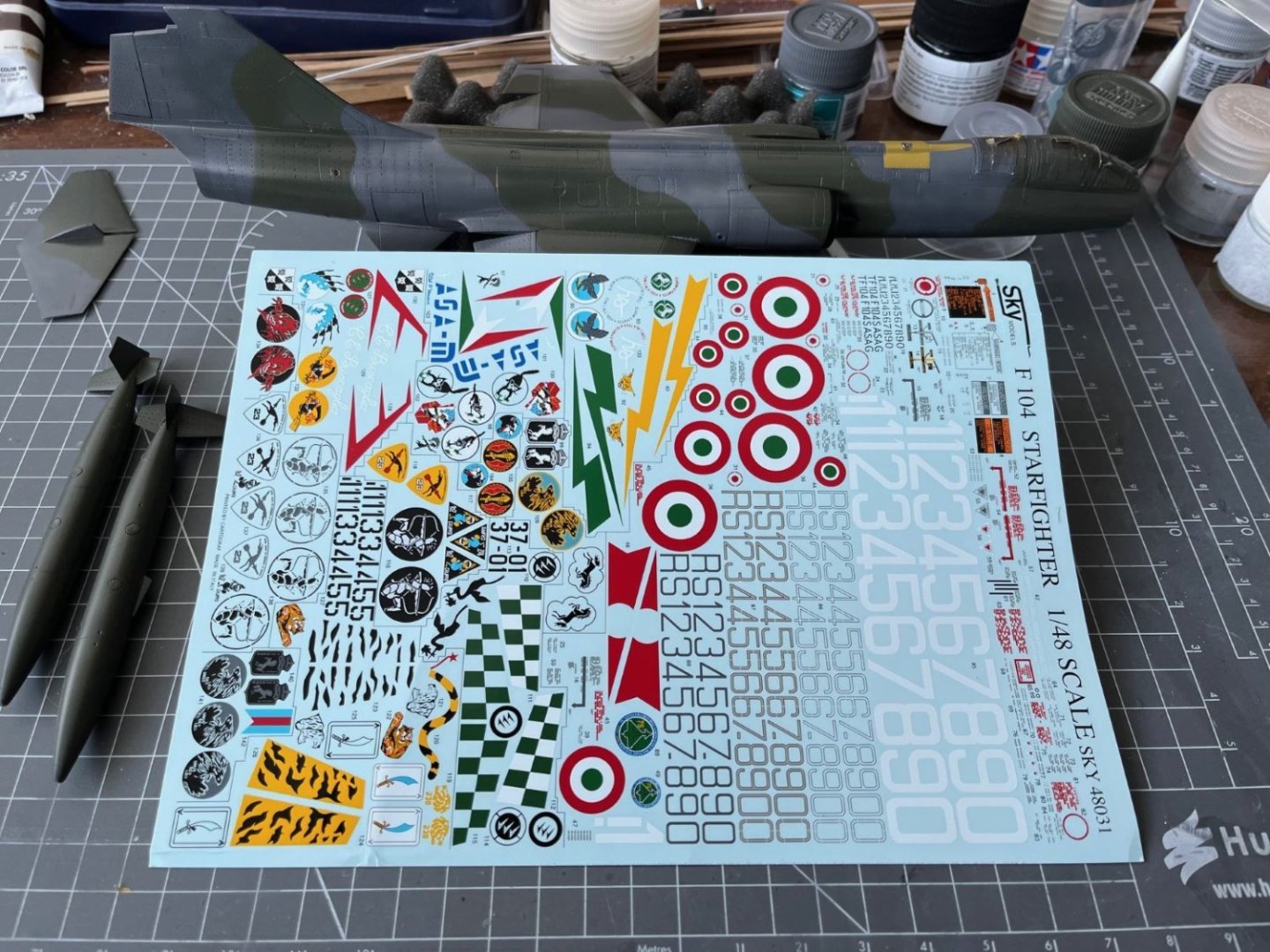
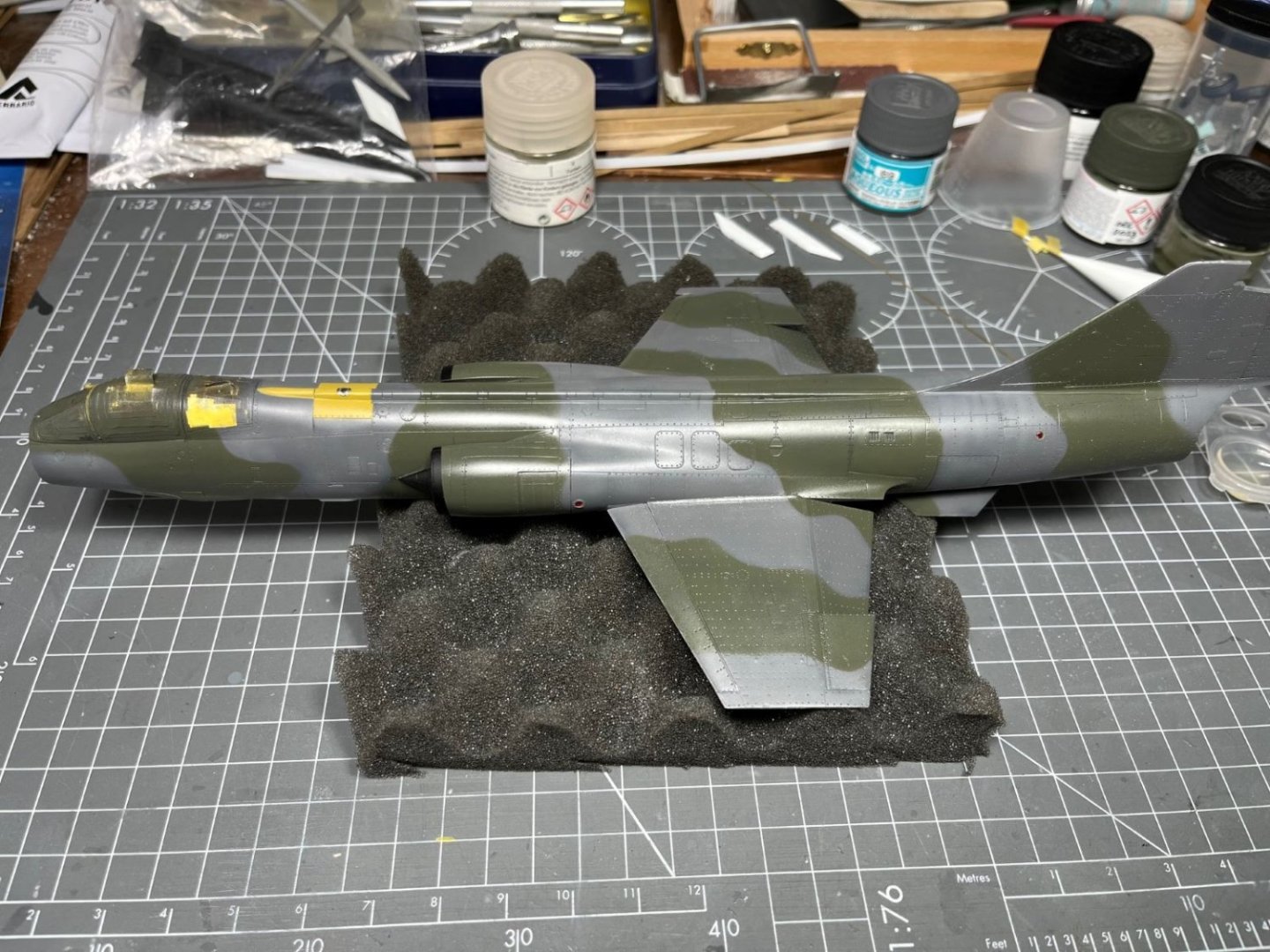
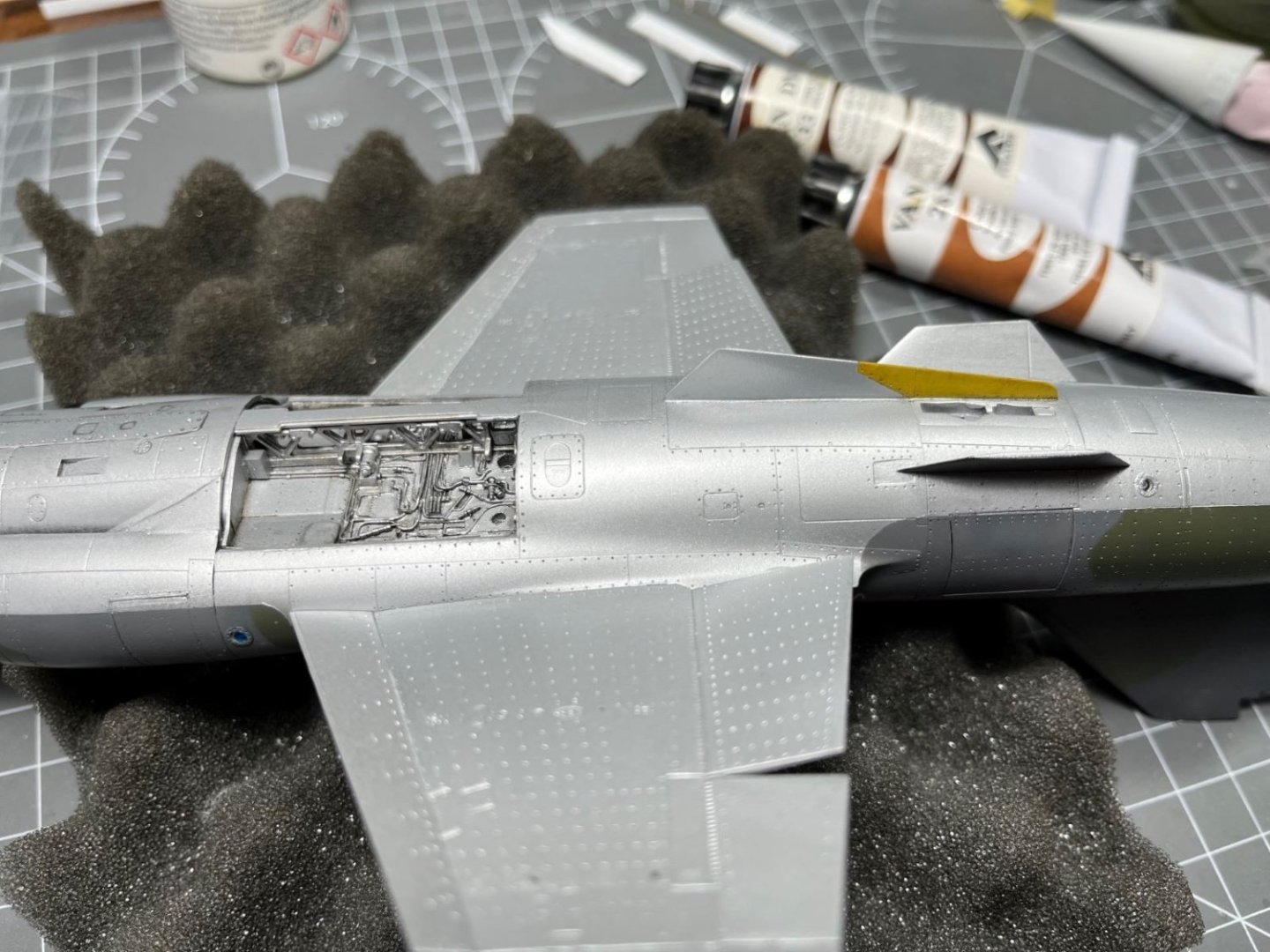

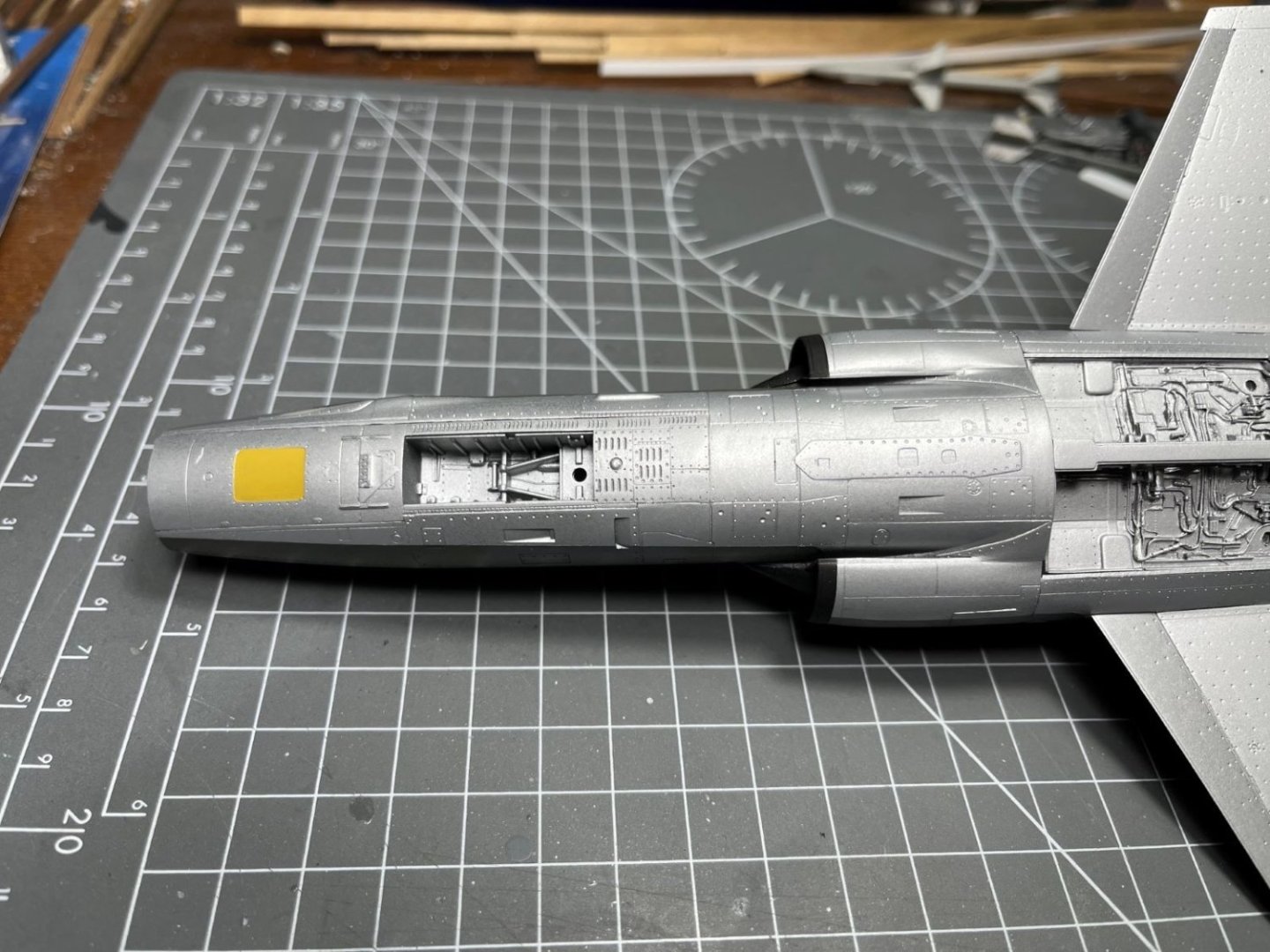
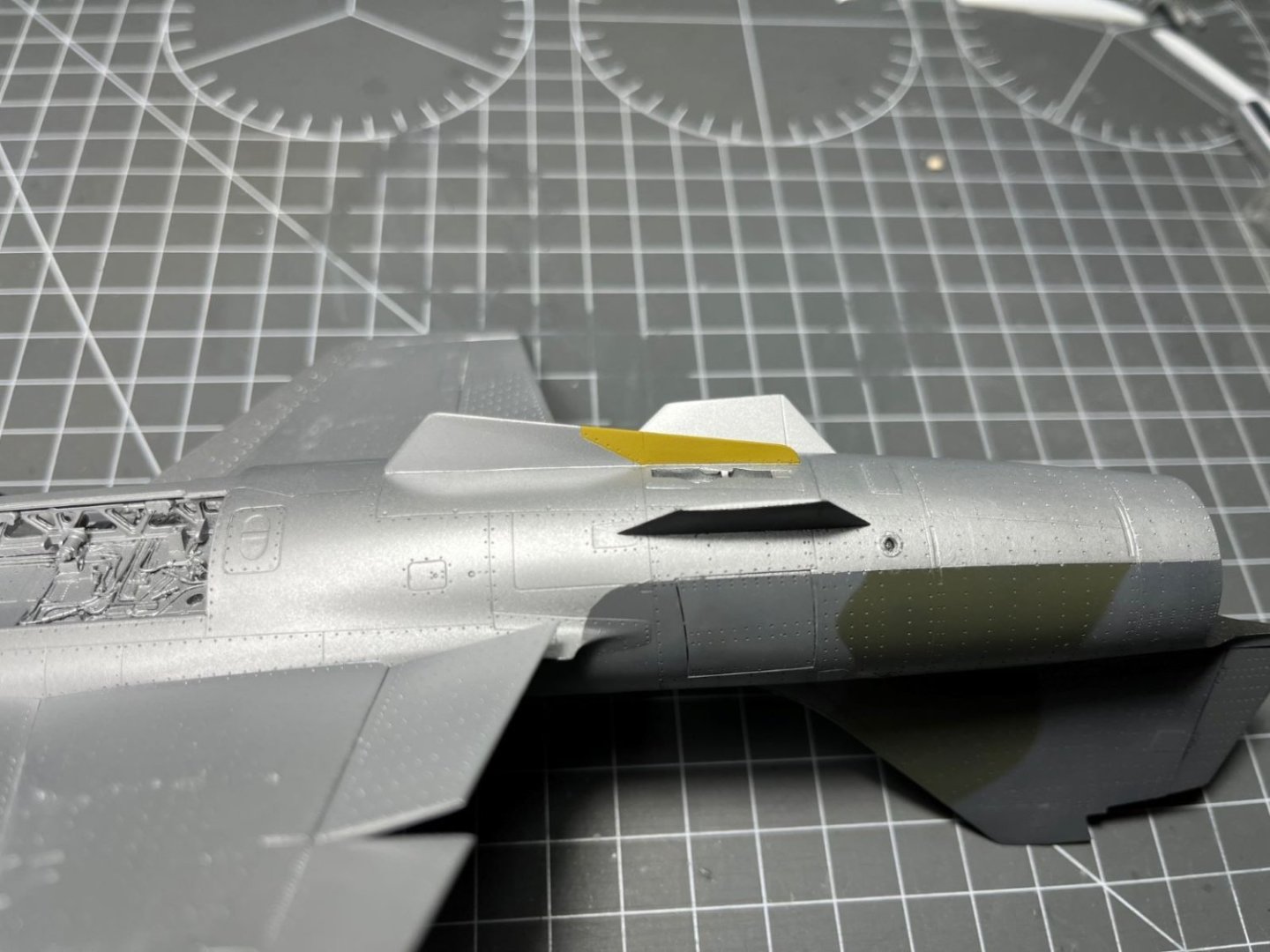
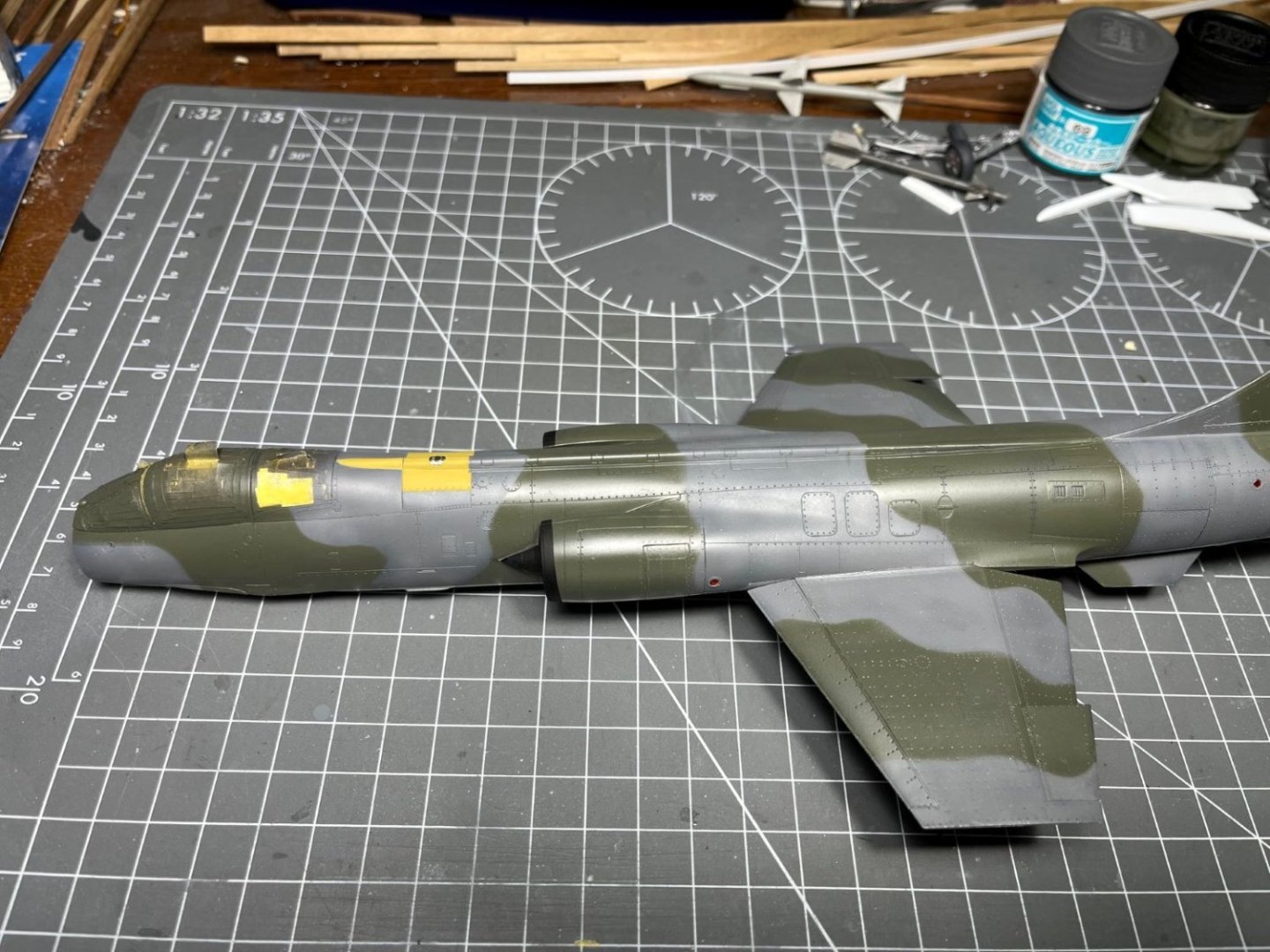
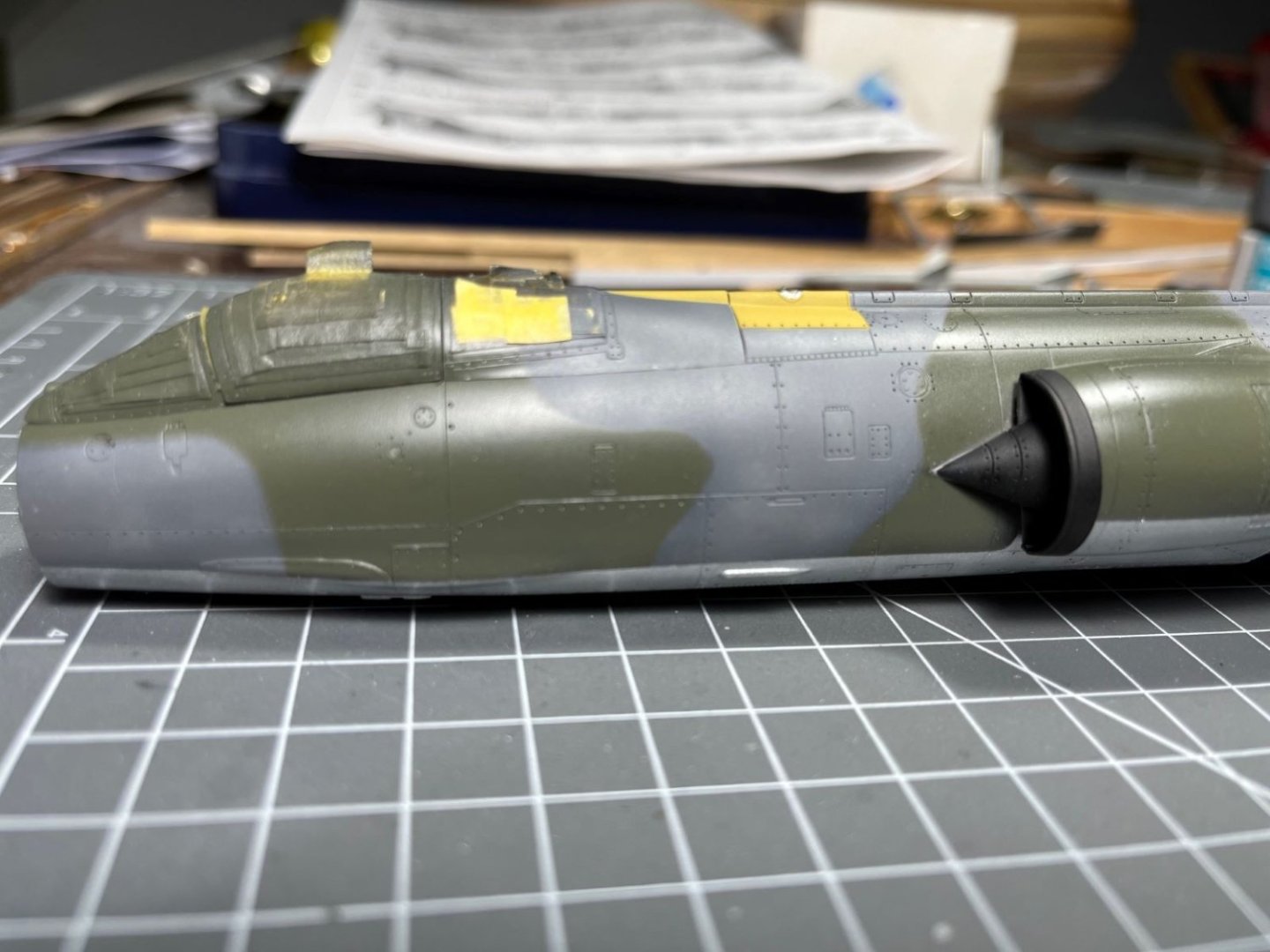
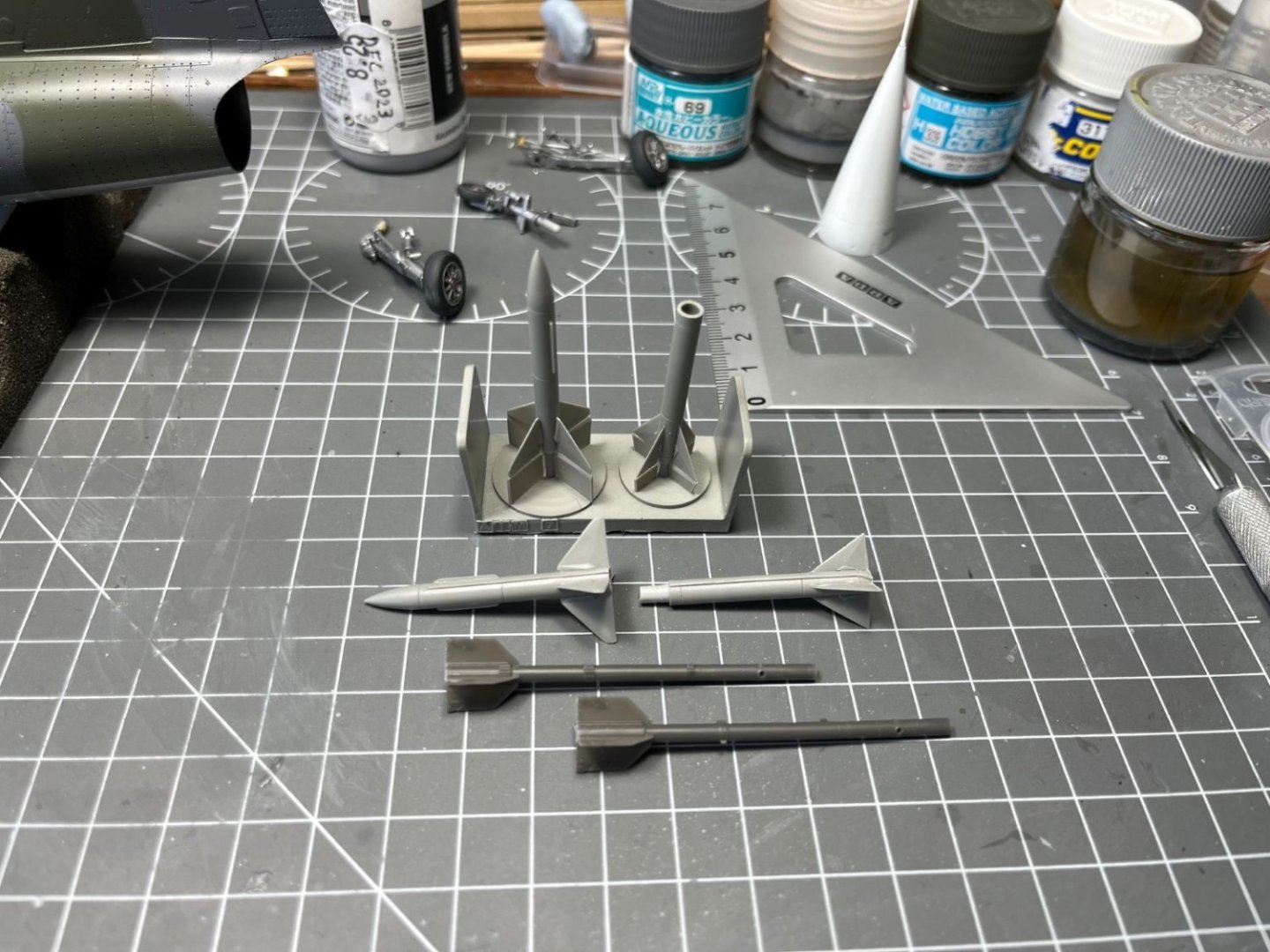
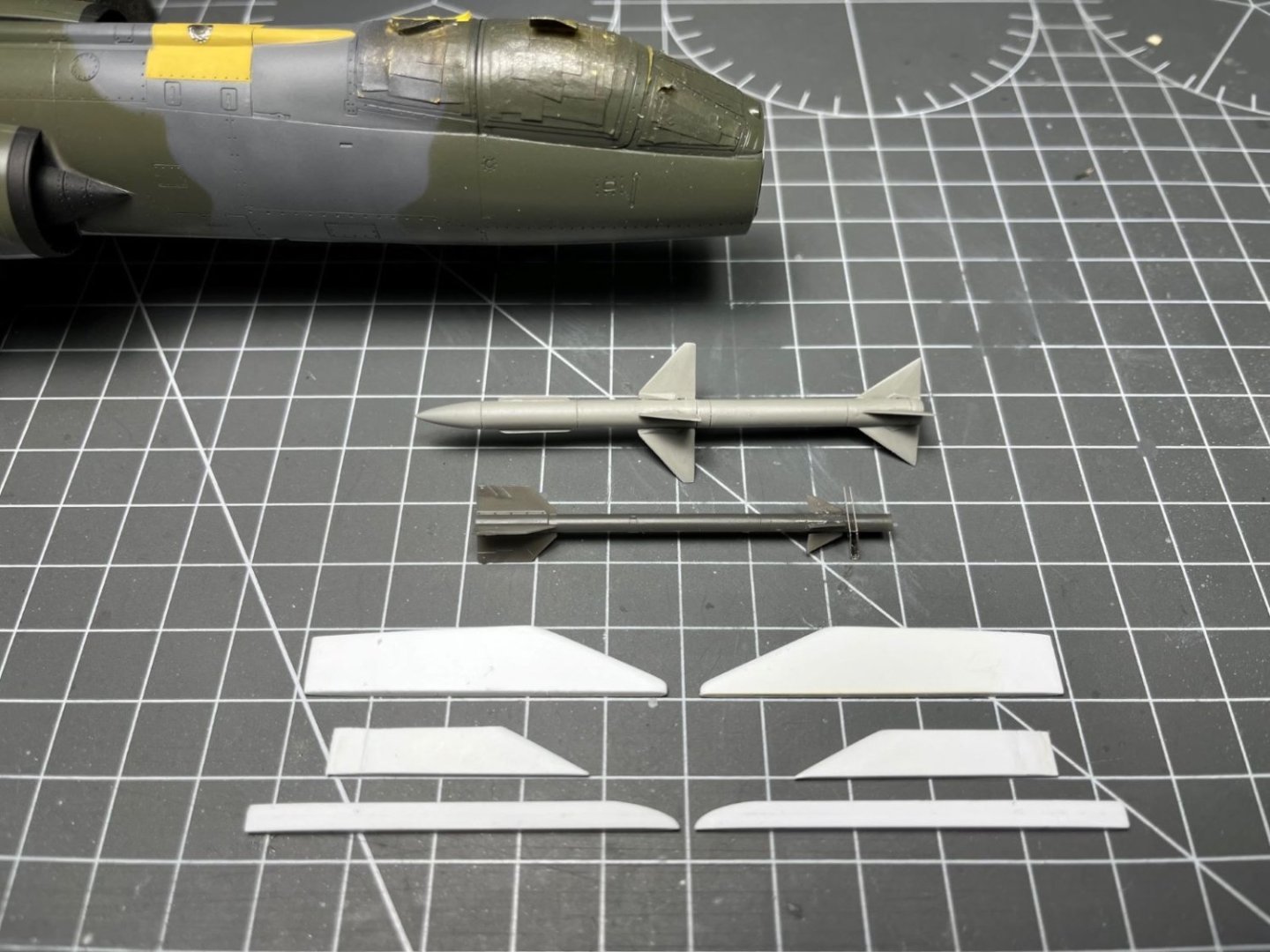
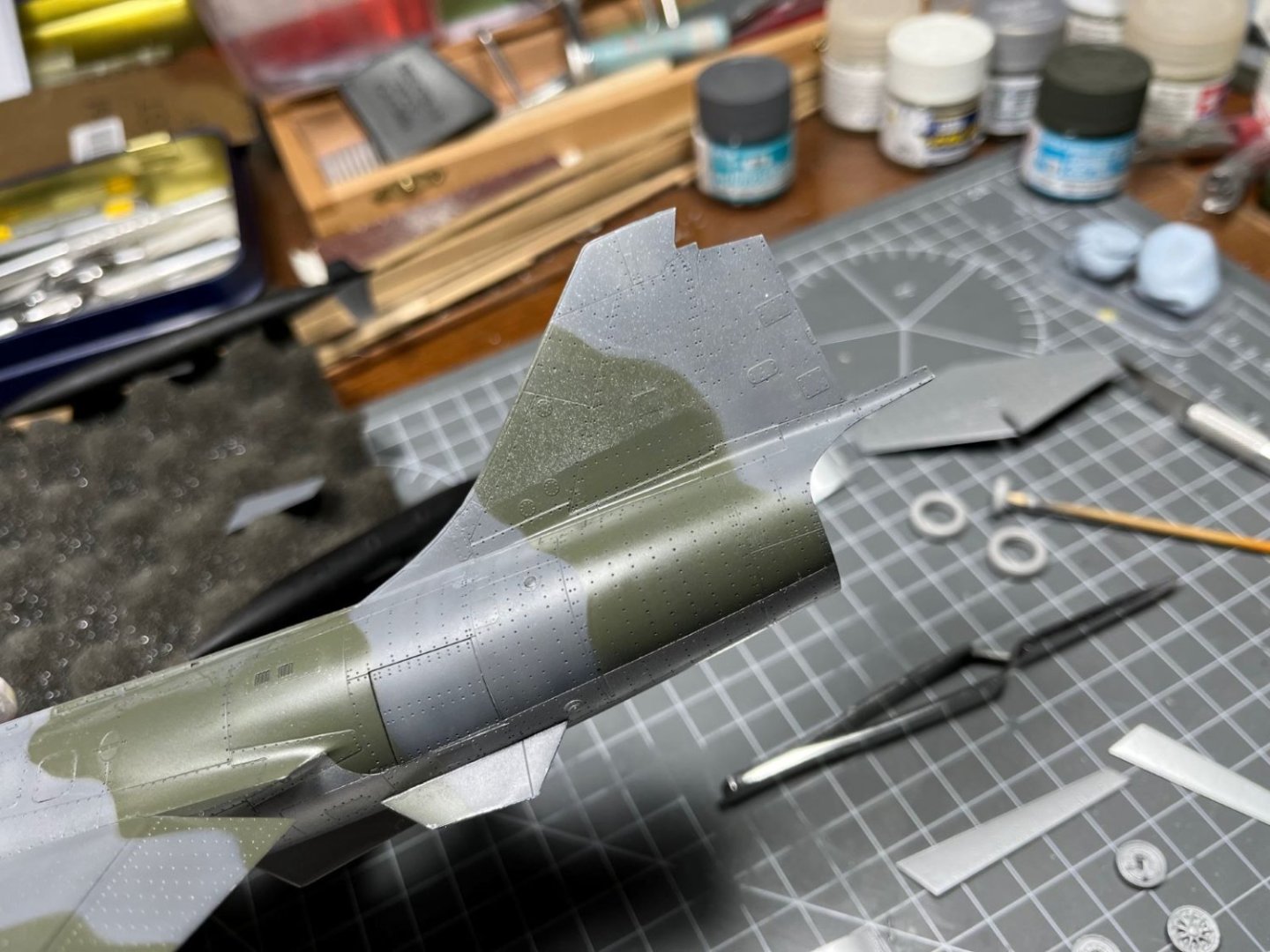
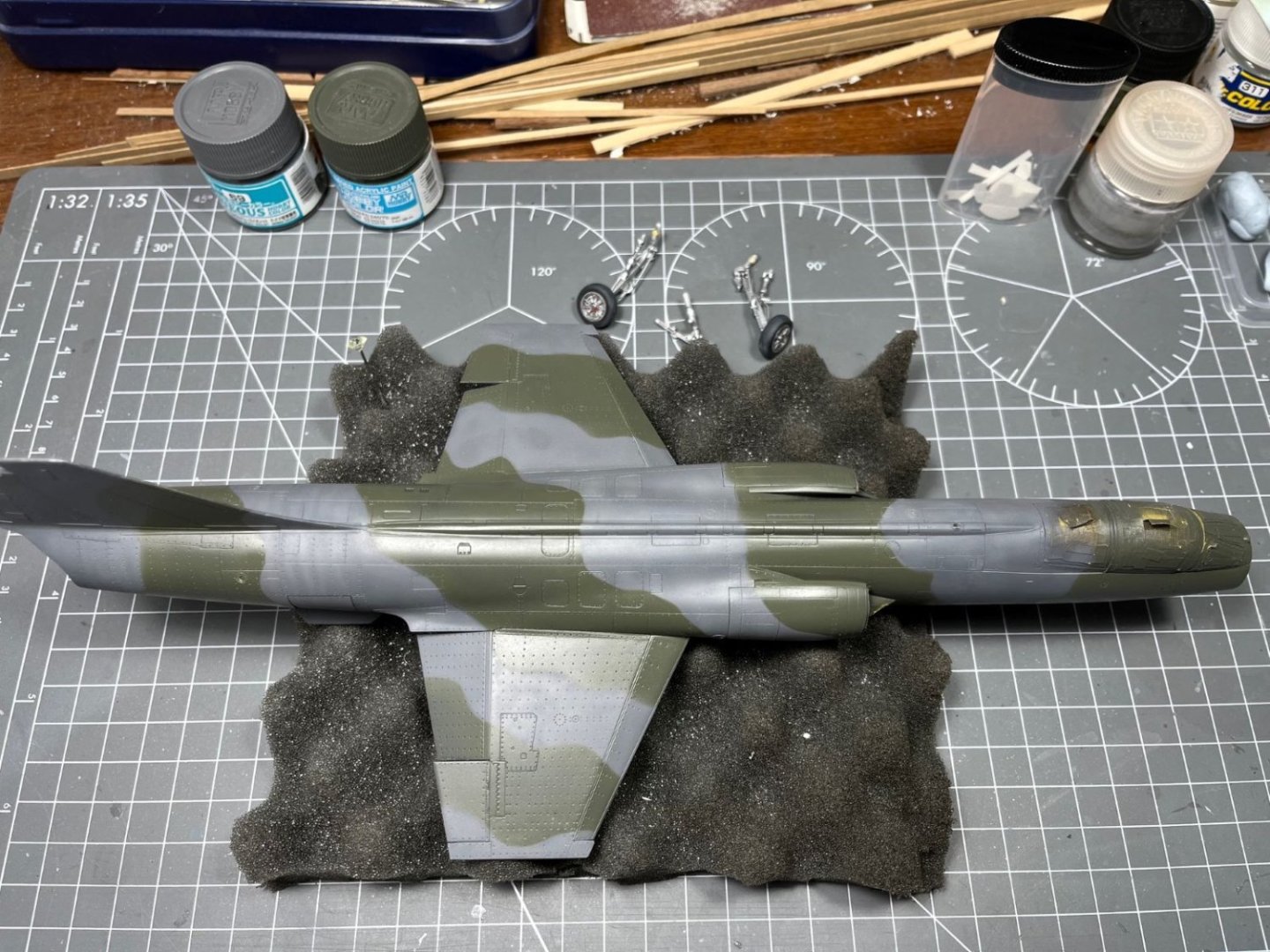
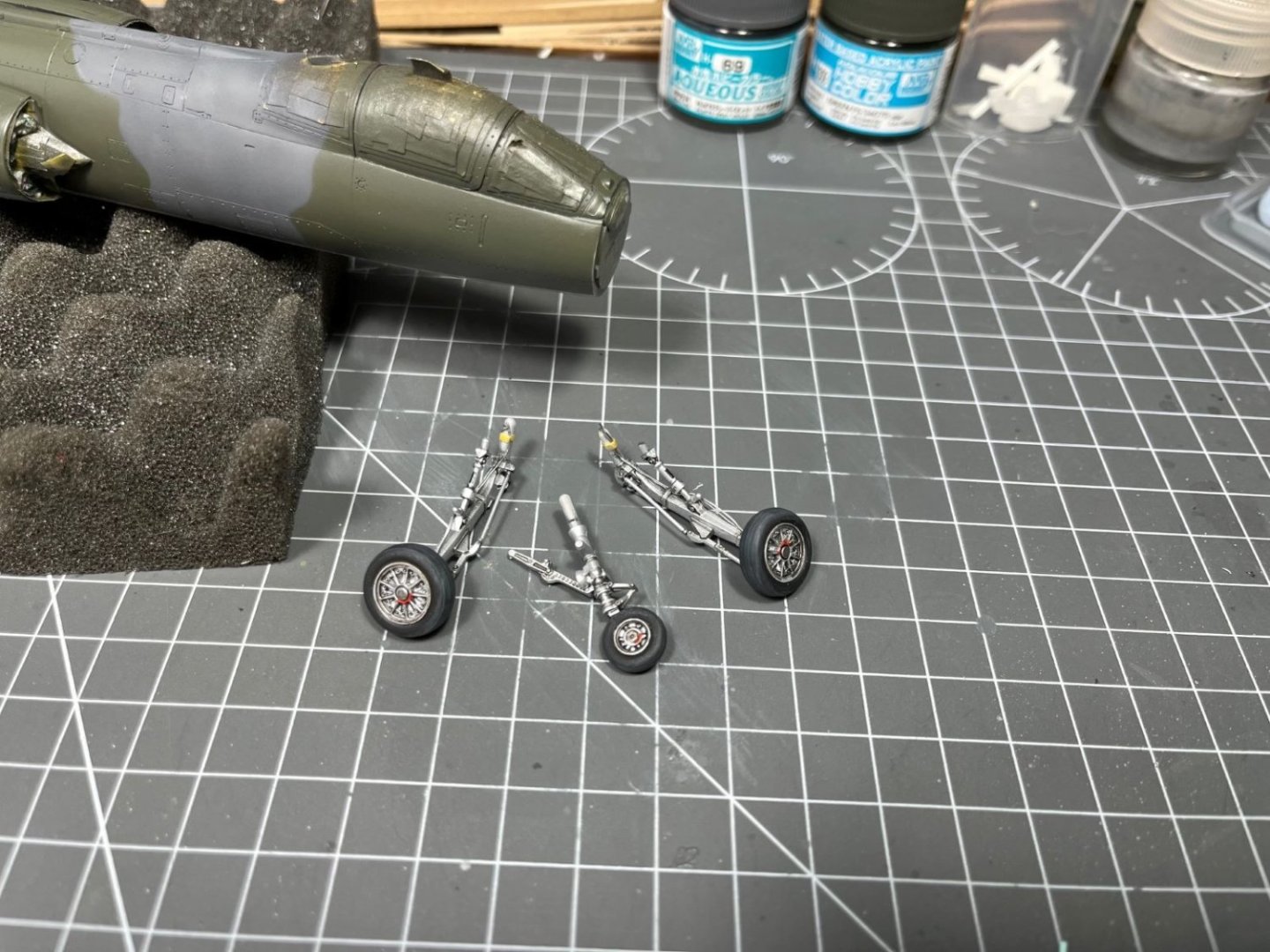
.thumb.jpg.7471bd57c9cdf57f8b4960c18521ce09.jpg)
